





Introducing the Damen SOV 7017 E, a fully electric Service Operations Vessel for the offshore wind industry of tomorrow. With its revolutionary offshore charging capabilities, the SOV E takes a significant step towards zero emissions maintenance of offshore wind farms. Connecting to a turbine offshore, the vessel is able to safely and efficiently charge without manual intervention – making the generation of green energy even more sustainable and providing a solution fit for the future.



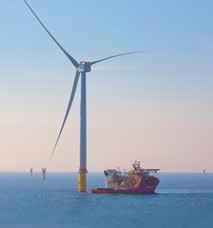


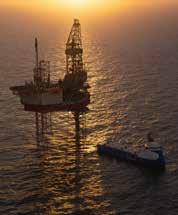
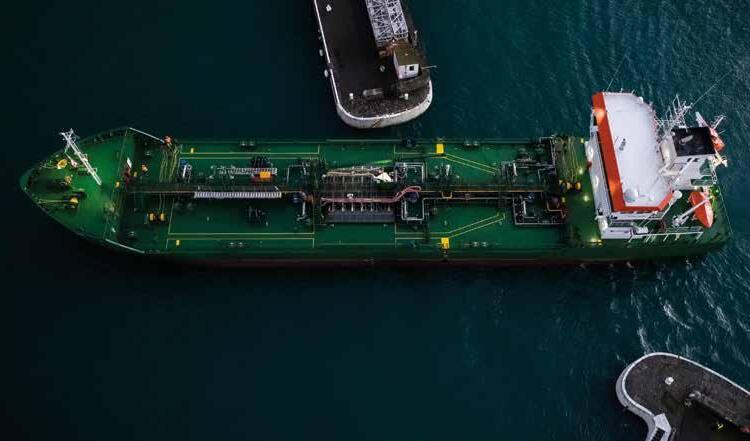
Look no further!
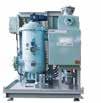
With Headway’s BWTU, Reikon supplies one of the lowest power consumers available. Add that to Headways ‘single treatment’ solution and you can save thousands of euros on fuel costs on an annual basis compared to other BWT solutions. And did we mention that in ten years time, we haven’t replaced a single core treatment element?





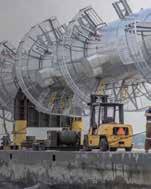
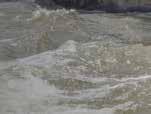
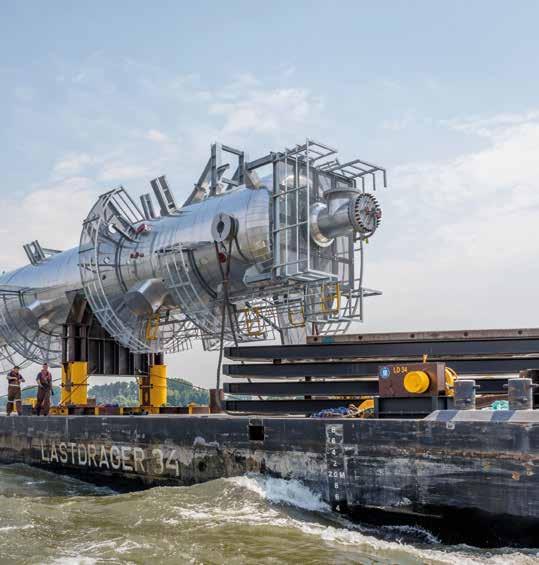




As we navigate the ever-evolving landscape of energy production, the need for sustainable practices has never been clearer. Offshore energy, with its vast potential, stands at the forefront of this transition towards green growth. In this issue, we explore how innovations are not only reshaping our energy sources but also contributing to a more sustainable future.
A key element in this transition is the role of the supply chain in advancing clean technology. From manufacturing components to logistics and installation, a robust supply chain is essential for delivering efficient and sustainable energy solutions. As we expand our offshore capabilities, optimizing this supply chain can lead to significant reductions in carbon footprints and enhance the overall efficiency of energy projects.
The urgency of climate change calls for immediate action, and the offshore energy sector is uniquely positioned to lead the way. With advances in technology, we are witnessing a remarkable shift towards cleaner energy alternatives. These developments not only meet current energy demands but also create a resilient framework for future generations.
However, this transition comes with challenges. Balancing ecological preservation with the need for increased energy production requires thoughtful planning and collaboration across industries and governments.
Importantly, as we shift towards a greener future, energy security remains a priority, especially from an oil and gas perspective. Many companies in this sector are setting ambitious net-zero targets and investing in clean technologies to ensure a responsible transition. By integrating sustainable practices within their operations, these companies not only contribute to energy security but also play a crucial role in the broader pursuit of climate goals.
As we move forward, let us embrace the potential of offshore energy to drive a sustainable future. By prioritizing green growth, strengthening our supply chains, and aligning with the net-zero ambitions of oil and gas companies, we can pave the way for a more resilient energy landscape that benefits both people and the planet.
The editorial team

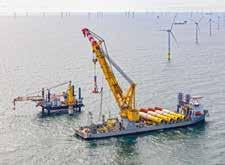




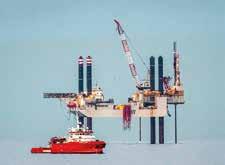



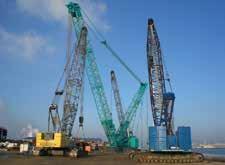





The Van Es Group is the ideal partner for ambitious startups, scale-ups, and SMEs that aim to impact the offshore and energy transition sectors – not just for today’s world but for the next generation. As a family of nine leading companies, we offer unique opportunities to achieve growth and bring innovative ideas to life. We support our family members with funding and legal, financial, HR, and marketing expertise. Together, we combine knowledge, networks, and expertise to drive change in the offshore industry with our heavy equipment.
STRONGER TOGETHER IN OFFSHORE AND ENERGY TRANSITION

The offshore industry stands on the brink of a major transformation. Globalisation, digitalisation, and the urgent need for the energy transition have reshaped the market.

Many new technologies have emerged with the shift from fossil fuels to renewables, bringing exciting opportunities and challenges for future generations. What was once considered normal –long working hours, limited flexibility, and fixed career paths – is no longer the standard for the new generation.
At the Van Es Group, we witness this transition firsthand in various ways, such as the business succession from father to daughter. This is not just a symbolic handover; it reflects a broader shift in the sector.
In this traditional work environment, letting go of old patterns and making space for new ideas can be challenging. However, the arrival of the new generation presents unique opportunities for innovation, sustainability, and personal development. Now, with the energy transition in full swing, we must look ahead together with them. From an HR perspective, it may sometimes feel like balancing the needs of employers with the expectations of future employees.
But perhaps these worlds are not at odds. Working in offshore offers significant challenges for the new generation. As employers in the offshore sector, it's time for us to seize these opportunities.
A recent study, both quantitative and qualitative, conducted within the Van Es Group highlighted three key pillars that are crucial to keeping the new generation, both literally and figuratively, on board and helping them grow:
The new generation seeks personal and professional growth. Standard skill training is no longer enough. We must focus on development programmes that go further – tailored to individual needs and aimed at leadership, collaboration, and creative thinking. Together with the new generation, we must create plans that strengthen their development and our business goals. This requires customised approaches, regular evaluations, and, above all, the courage to ask what they find important.
The new generation demands more freedom and flexibility in their work. This is a challenge in a traditional sector like offshore, but offering additional leave, more flexible work schedules, and alternative working hours can help. Swift Drilling, one of the Family members of the Van Es Group, is working alongside social partners to ease offshore rotation schedules on the Dutch continental shelf. This calls for transpar-
ent dialogue and mutual trust between employer and employee.
A positive work atmosphere attracts new employees and keeps them motivated. The new generation wants to work in an environment where they feel inspired, their voice is heard, and where they contribute to larger goals, such as the energy transition. The new generation wants to make a difference, and we are ready to support them.
By focusing on personal growth, flexibility, and positivity, we can bridge the gap to the next generation while building the future of the offshore sector and the energy transition together. The Van Es Group and its Family members are ready to face this challenge with you!
The future of offshore is exciting and full of possibilities. Would you like to shape this future with us?
Visit us at stand 1.319 or contact us at info@vanesholding.com and discover what we can do for your project or innovation.
Hannah Bom HR Director Van Es Group


The UK government has unveiled the results of Allocation Round 6 (AR6) of the contracts for difference (CfD) renewable auction, with six projects across five sites securing contracts to deliver 28 MW of tidal stream capacity at a rate of £172/MWh (approximately $225/Mwh).
AR6 marks the third consecutive renewable auction in the UK with a dedicated ringfence for tidal stream energy, the Marine Energy Council (MEC) said. This approach has established the UK as a leader in tidal stream deployment, with over 130 MW of capacity expected to be operational by 2029.
The AR6 contracts include HydroWing, set to deliver 10 MW in Wales, while in
Scotland, MeyGen will provide 9 MW, Seastar 4 MW, Magallanes 3 MW, and Ocean Star Tidal will provide 2 MW, bringing the total to 18 MW.
Scotland now has 83 MW and Wales 38 MW of contracted tidal stream capacity through the UK’s renewable auctions. No tidal stream project has yet been contracted in England, therefore, MEC said it aims to collaborate with the UK gov-
ernment to distribute tidal stream opportunities more evenly across Great Britain. Key industry players have welcomed the latest UK renewables auction results, viewing it as a strong endorsement of the tidal energy sector’s growth.
The HydroWing project at Morlais has been expanded to 20 MW following the AR6 CfD allocation, where an additional 10 MW was awarded. According to In-
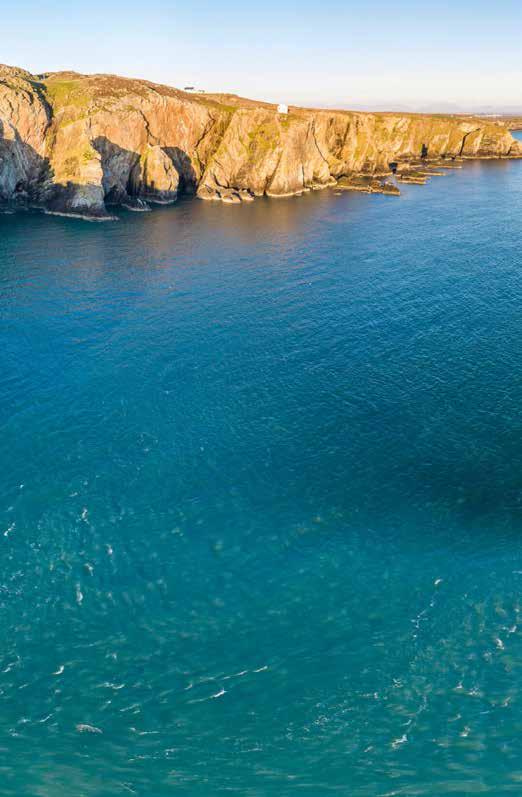
yanga Marine Energy Group, the owner of HydroWing, this expansion supports the development of commercially viable generation projects through economies of scale.
“This award is a testament to the hard work of our pioneering team and the relentless drive to make HydroWing competitive. This award further enhances our expansion in Anglesey and our commitment to develop the project in partnership with Morlais Mentor Mon to allow the site to reach its full potential and provide economic growth and benefit to Anglesey,” said Inyanga Marine Energy in a social media post.
In January, Inyanga Marine Energy opened a new office in Wales to support the development of the Hydrowing tidal stream energy project at Morlais, Anglesey.
SAE Renewables, the owner of MeyGen, which is described as “the largest consented tidal stream project in the world,” has added 9 MW to the project, bringing the total project capacity under development to 59 MW. This phase adds to the 6 MW already operational at the site.
SAE’s CEO, Graham Reid, said: “The scale and opportunity that MeyGen represents for the industry, the supply chain, our
stakeholders, and the wider United Kingdom is significant, and we will work with all involved to ensure its success.”
According to the Scottish company Nova Innovation, its EU-funded Seastar and Oceanstar tidal energy projects located at the Fall of Warness wite in Orkney, secured three 15-year contracts, as part of the CfD auction.
“Winning the CFD contract is a testament to our team’s ability to deliver solid results whilst continuing to innovate and grow. This is another significant step towards realising our vision of a world powered by clean, sustainable marine energy,” said Julie Aird, CFO of Nova Innovation.
Scotland’s Magallanes Renovables said it secured a power purchase agreement (PPA) for the next 15 years. The company added: “This is the 4th Project we´ve been awarded within the past 3 years, since the allocation opened for Tidal mills, what reinforces our commitment towards reaching a more sustainable future by unlocking ocean currents.”
In March, Magallanes partnered up with Tadek Ocean Engineering for support related to its first commercial-scale tidal energy array.
Energy developers see Anglesey as ‘center of excellence for tidal energy’ According to Menter Môn Morlais, the CfD awarded to HydroWing provides revenue security for the electricity generated at Morlais and supports the expansion of the Ynys Môn scheme, as owner Menter Môn Morlais plans to increase the generating capacity to 240 MW.
The AR6 supports Anglesey’s goal to become a hub for tidal energy and is important for attracting future investment to the area, said Menter Môn Morlais.
John Idris Jones, Chair of Menter Môn Morlais, noted: “We are pleased that HydroWing has been allocated additional
Megawatts at Morlais and signals that we are headed in the right direction. We are still at the start of our journey and see today’s news as an important step forward as we grow the project to its full potential'.''
The CfD scheme is said to guarantee developers a fixed price for their electricity and underscores the role of tidal stream as a reliable energy source.
Morlais, run by social enterprise Menter Môn, is described as the “largest consented tidal energy project of this type in Europe”, spanning 35 square kilometers of seabed. According to Menter Môn Morlais, Morlais has the potential to generate up to 240 MW of clean, low-carbon electricity once completed. The first turbines are projected to be deployed at sea in 2026.
Richard Parkinson, Managing Director of HydroWing, added: “The successful AR6 application is the culmination of a huge effort from our team to develop a more efficient and cost-effective tidal energy solution for Morlais. We look forward to working closely with Menter Môn and with our supply chain partners in Anglesey to deliver clean and predictable power to the grid.”
Marine Energy Wales stated that HydroWing securing 10 MW of the total 28 MW contracts awarded across the UK means that Scotland now has 83 MW and Wales 38 MW of contracted tidal stream capacity.
“Tidal stream is leading the way in Wales. We are delighted to see this additional capacity at Morlais – almost half of the 22MW secured in last year’s Allocation Round,” said Tom Hill, Program Manager at Marine Energy Wales.
“Continued support from Government in the form of a ringfence for tidal stream technology and lower strike prices will continue to bring the cost of delivery down and provide high quality jobs for Welsh communities.”
Reminder for EU that ‘market visibility and funding support are instrumental in driving ocean energy’s industrialization’ According to Ocean Energy Europe (OEE), Europe’s position in clean energy relies on advancing innovative technologies such as ocean energy, which can generate power at different times compared to established renewables.
The new Commission can capitalize on this momentum to strengthen Europe’s leadership. Continued EU funding and address to risk-reduction tools will be crucial for attracting private investments and advancing the industry, said OEE.
“The UK’s success with tidal CfDs shows that governments can swiftly deliver multi MWs ocean energy farm scale projects with earmarked revenue support,” said Rémi Gruet, CEO of Ocean Energy Europe.
“This should light the way for other European countries with wave and tidal re-
sources to follow suit to unlock the full potential of ocean energy. Such measures brought wind and solar to the market and will be equally crucial for ocean energy. “
According to the UK’s technology and research center, Offshore Renewable Energy (ORE) Catapult, despite the increase in the tidal stream budget from £10 to £15 million for AR6, this auction round was only expected to allow for 20 MW awarded capacity.
The high costs of delivery of tidal stream projects necessitate a high reference price from the government, limiting the impact of the ringfenced budget, noted ORE Catapult. Nonetheless, the results include six projects with a combined capacity of 28 MW, at a strike price of £172/ MWh.
“The strong number of successful bids seen in AR6 sets the stage for further proving out the tidal stream technology, and validates the ringfencing of budget specifically for tidal stream in facilitating a variety of project technologies and locations in this sector,” said ORE Catapult.
According to a research by Offshore Renewable Energy (ORE) Catapult and Imperial College London (ICL), tidal energy has the potential to provide 11.5 GW to the UK energy system, 11% of the UK’s electricity demand, and tidal stream projects could contribute up to £17 billion to the UK economy by 2050.
By Zerina Maksumic


















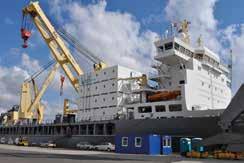











INTEGRATED ACCOMMODATION SOLUTIONS




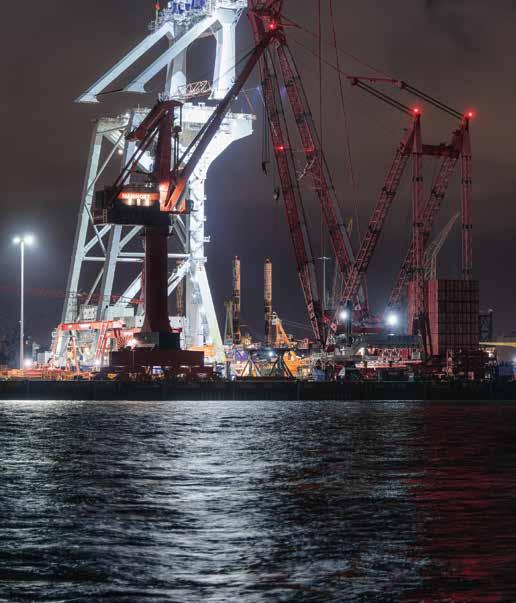

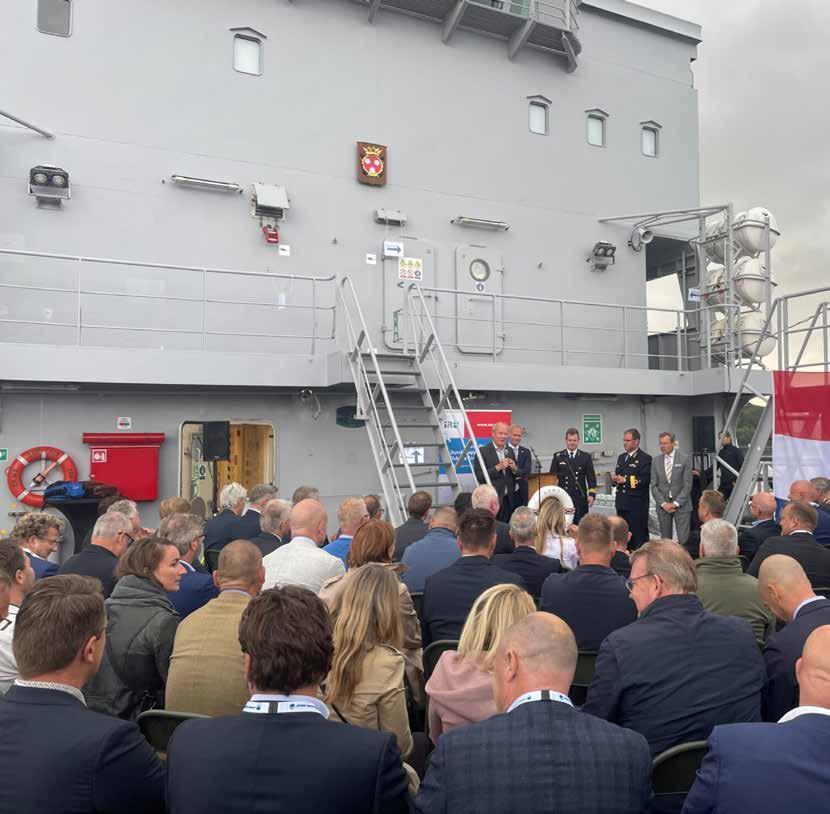
Subsea infrastructure is critical to the energy security in Europe and with the world not looking so bright there is a real urgency to get something going to protect this infrastructure, but the solution is not easy to find, panelists said at a discussion on seabed security organized by IRO, the Association of Dutch Suppliers in the Offshore Energy Industry, Royal Netherlands Navy and the Netherlands Embassy in Norway.
Held on board the hydrographic survey vessel HNLMS Snellius, moored in Norway’s Stavanger harbor, as part of the ONS 2024 conference, the session gathered Paul Flos from the Royal Netherlands Navy, René Peters, Program Manager for Energy Infrastructure at TNO and IRO board member, Sander van Luik from the recently-launched Seabed Security Experimentation Center (SeaSEC),
and Mark Heine, CEO of Fugro and IRO Chair.
The speakers defined critical infrastructure as the one that can threaten or affect energy security and the security of supply if some of it fails or a cable or pipeline is broken. With the North Sea having 3,000 kilometers of gas pipelines, plus a lot of cables, this is difficult to monitor on a daily basis.
Outlook not looking very bright René Peters from TNO noted that critical infrastructure in the North Sea related to the energy system, not only gas pipelines but also electrical and data infrastructure, is very sensitive and can potentially be a victim of sabotage.
A huge amount of power cable infrastructure will come with the

development of offshore wind in the Netherlands, currently standing at 5 GW with the goal of having 20 GW in the early 2030s, as well as interconnectors and other future infrastructure, including hydrogen if it becomes the gas of the future.
“Things are changing in the world. In Europe, there is a war going on and we expect it will not stop there in the near future. All analyses show that around 2027 something will happen in the world, either in Europe or the Far East. Although no bombs will drop immediately in the Netherlands or
Norway, it will affect us, so we have to do stuff. We need to do differently than in the past. The world does not look so bright and we have to prepare,” Paul Flos said.
To act on safeguarding the existing subsea infrastructure, a six-nation initiative called SeaSEC was launched in December 2023 by the Netherlands, Denmark, Germany, Finland, Norway and Sweden with the aim of developing new techniques and enabling governments to monitor infrastructure in the North Sea and Baltic Sea up to a depth of 30 meters, including pipelines for oil & gas, platforms on which wind turbines are built and internet cables.
SeaSEC as the first step SeaSEC, the research center for submarine infrastructure security, officially opened at Campusatsea in Scheveningen, The Hague, in December 2023 as a commitment to safeguarding the subsea infrastructure in the North and Baltic seas through a combination of experiments, testing, and the development of innovative techniques.
Among other things, the partners behind the initiative want to create a virtual image of the seabed, on which any threats to the submarine infrastructure immediately become visible. The establishment is part of the Northern Naval Capability Cooperation (NNCC), with the plan to eventually open SeaSEC branches in Sweden and Germany.
According to Sander van Luik from SeaSEC, common security concerns relate to such a big area that cooperation is a necessity, both civilmilitary and internationally, to address them, and urgency commands looking
at applying existing solutions for new security challenges.
Van Luik noted that SeaSEC does not have the solutions to the problems but will work on understanding the relevant questions, how to have working solutions that are already used in the offshore industry, and will try to find solutions by working with asset owners and the industry, including both manufacturing companies and service providers.
What can be done?
In terms of what can be done to speed up the action, the panelists agreed that using civilian equipment is one option, which can be done without adjusting it, as well as exchanging ideas and data between countries. Remotely operated vehicles (ROVs) and autonomous underwater vehicles (AUVs) would be used for most of the work.
As a member of IRO, Dutch geo-data giant Fugro is looking to support the project. The company’s CEO Mark Heine said: “We have been collecting data offshore for many years all across the world, increasingly with ROVs and AUVs. This is the first time we are working with the Dutch Ministry of Defense. It is an open dialogue to see how our innovative technology, like the new 18-metre uncrewed surface vessel, can support protection of critical subsea infrastructure.”
The second panel on seabed security will be held at our Offshore Energy Exhibition & Conference (OEEC) on Tuesday, 26 November, at RAI Amsterdam. The session, organized in collaboration with IRO, is on schedule at The Stage from 14:00 until 14:55.
By Nadja Skopljak

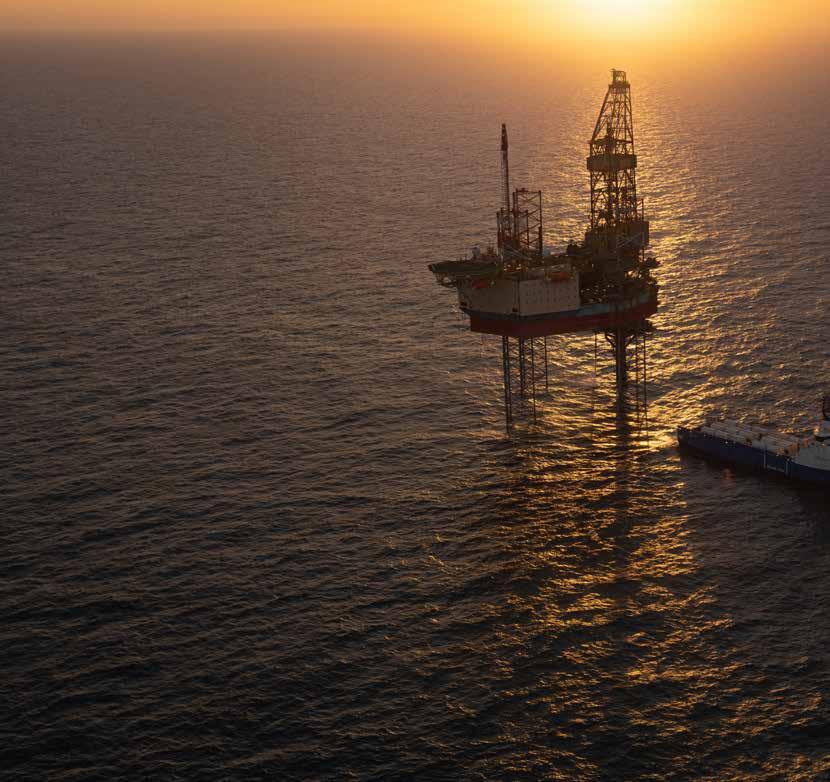
The consortium partners behind Project Greensand submitted the final report for the CO2 storage pilot project in September, paving the way for the development of large-scale carbon capture and storage (CCS) in Denmark.
Project Greensand includes capturing CO2 at an INEOS Oxide site in Zwijndrecht, Belgium, which is transported cross-border and stored in the Nini field in the Danish North Sea. The CO2 injected is stored at a depth of about 1,800 meters below the seabed.
The project envisages CO2 being transported by the offshore supply vessel Aurora Storm, which has been adapted so that it can safely transport containers of liquid CO2. In time, an-
other type of vessel known as a CO2 carrier will be used for large volumes.
Confirmation of the technology
Project Greensand marked a world first on March 8, 2023, with the first-ever injection of CO2 in the North Sea, demonstrating that captured CO2 can be transported across borders and stored offshore.
A couple of months later, classification society DNV verified the safety of all
aspects of the project's CO2 storage in the closed Nini West reservoir.
The project is said to be the first in the world to demonstrate that CO2 can be transported across national borders and stored offshore to mitigate climate change.
“We now have documentation that we have a well-functioning storage for CO2 in the North Sea subsoil, where large amounts of CO2 that would oth-
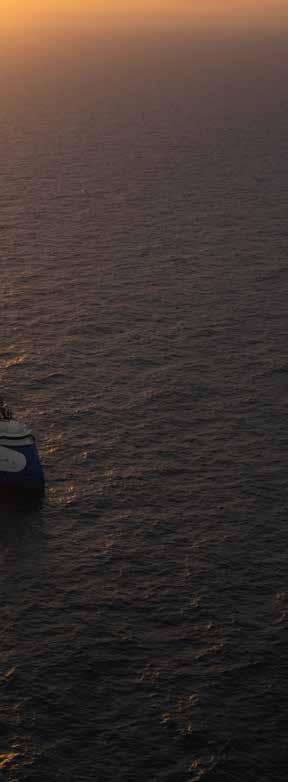
erwise have been emitted into the atmosphere can be safely and permanently stored,” said Mads Gade, Country Manager at INEOS Denmark and Commercial Director at INEOS Energy.
“We can see that the stored CO2 behaves as expected in the reservoir 1,800 metres below the seabed. That confidence gives us a solid foundation to take the next steps that will be crucial for CCS in Denmark."
Pilot phase verified
The partners behind the project have completed and verified the pilot phase, with lead partner INEOS already hav-
'Project Greensand will be able to store up to 8 million tonnes of CO2 per year'
ing applied for approval on behalf of license partners Wintershall Dea, now Harbour Energy, and Nordsøfonden for Denmark's first large-scale CO2 storage facility, and is working to start CO2 storage in the North Sea by the end of 2025 or the beginning of 2026.
In the short run, Project Greensand can store up to 1,5 million tonnes of CO2 per year in 2025/2026. In the final expansion phase, scheduled to begin in 2030, the project aims to store up to 8 million tonnes of CO2 per year in the area, representing 40% of Denmark’s total emission reduction target.
According to INEOS, experience from Greensand will be included in the work to demonstrate safe storage on land in Denmark as an investigation is underway whether it is possible and safe to store CO2 underground on land. Earlier this year, the Minister for Climate, Energy and Utilities awarded INEOS, Wintershall Dea and Nordsøfonden an exploration license for an area of the Danish subsurface in Jutland in the Gassum reservoir.
“We emphasised that Denmark has moved to the forefront of CCS in the world when we stored the first CO2 in the North Sea. Now we are in the process of investigating how to take the next step, and here we stand on the shoulders of the invaluable experience from Project Greensand's pilot," Gade said.
"We are keen to continue this momentum with an ambition that Greensand
will be the first CO2 storage facility in operation in the EU, and we are now awaiting the Danish authorities' approval of a permanent storage. This is an important step, because if Denmark takes just 5% of a future CCS market in Europe, it could mean up to 9,000 jobs, with an economic potential of DKK 50 billion."
To remind, the Danish Energy Agency granted the first-ever permit for a CO2 storage project in Denmark at the end of 2022 to INEOS E&P and Wintershall Dea for the Greensand Pilot Injection Project. In February 2023, the partners received the first full-scale CO2 storage permit for the Danish North Sea.
Besides INEOS and Wintershall Dea, more than 20 other partners are involved in the project, including startups, independent institutes, and the Geological Survey of Denmark and Greenland (GEUS), an institution within the Danish Ministry of Climate, Energy and Utilities. The Danish Government is supporting the project with a total of €26 million in public funding.
Earlier this year, Denmark joined forces with four other northern European countries - Norway, Belgium, the Netherlands and Sweden - to conclude arrangements on the transport and storage of carbon across borders, which allow for the removal of some of the obstacles on the way to a well-functioning CCS market in the wide North Sea region.
By Nadja Skopljak

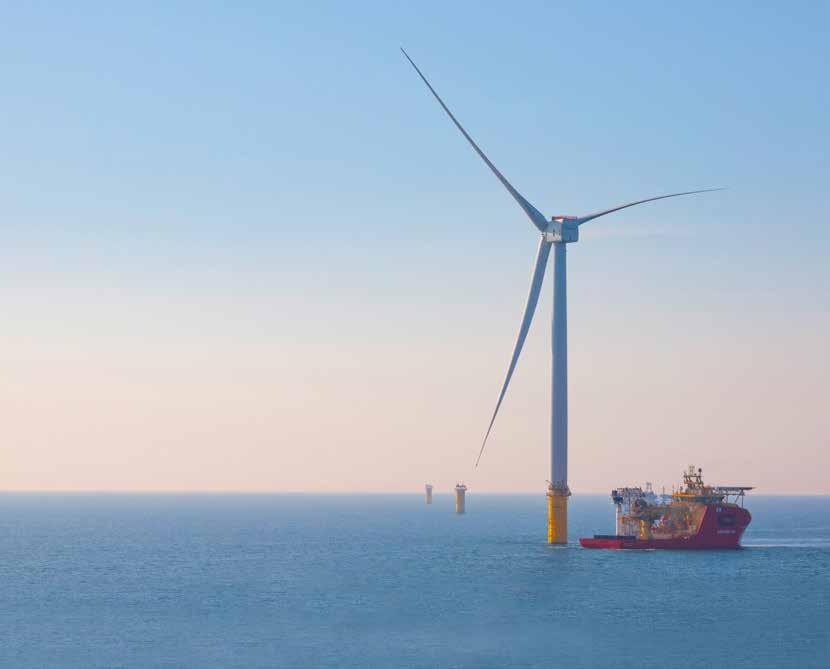
GE Vernova is working on downsizing its offshore wind turbine business. Siemens Gamesa is undertaking restructuring which includes ramping up its offshore capacities. Meanwhile, Mingyang Smart Energy is gaining a foothold in the European offshore wind market.
Wind turbine original equipment manufacturers (OEMs) doing business in the offshore arena in Europe and the US have been a company of three for a while now. US-based GE Vernova, Danish Vestas and German-Spanish Siemens Gamesa have had their technology installed on numerous offshore wind farms and ordered for new projects worldwide, predominantly in Europe and the US.
However, in Europe, this landscape seems to change, at least to some extent, as Chinese Mingyang Smart Energy could set up shop in Italy and has already secured its second offshore wind order. In the US, GE Vernova’s recent move to slim down its offshore wind business is
raising questions about its technology being part of future offshore wind farms.
These come as Siemens Gamesa has been working to bring its business back to profitability after experiencing notso-great results over the past few years and its owner, Siemens Energy, is now implementing a restructuring plan.
How all this might affect the offshore wind industry and the wind turbine market, especially that in Europe, is yet to be seen. But after around a decade of having GE, Vestas and/or Siemens Gamesa as the go-to suppliers, it is expected that the market will see a slight change in dynamics at the least.
GE Vernova
On September 19, GE Vernova filed a proposal to its European Works Council related to changes the company plans to implement in its offshore wind business globally, which could affect 900 jobs.
According to a company source, GE Vernova will support the potentially impacted employees over the next several months. “We will do everything we can to help everyone in their potential transition inside or outside GE.”
A GE Vernova spokesperson said the proposal reflected industry-wide challenges in wind energy and that the company aims to transform its offshore wind

business “into a smaller, leaner and more profitable business within GE Vernova”.
The move comes amid inflation and global supply chain challenges, as well as lower-than-expected volume associated with delays to GE Vernova’s key projects, according to a source from the company. With the decision to make cuts to its offshore wind business, the company aims to return it to profitability and integrate within its Wind Segment, which is said to be consistent with GE Vernova Wind businesses’ turnaround strategy.
The US-based wind turbine manufacturer has seen more than one setback in the installation of its Haliade-X wind turbines on projects currently under construction over the past few months, all related to issues with blades. First, a blade event occurred at the Dogger Bank Wind Farm in the UK in May 2024,
which was found to have been caused by an installation error. Then, some two months later, a blade on a Haliade-X wind turbine installed at Vineyard Wind 1 in Massachusetts was damaged, with a section breaking off and falling into the sea. This was determined to have happened due to a manufacturing deviation.
In August 2024, another blade failure was reported at Dogger Bank Wind Farm, this time on an installed wind turbine. According to a press release from GE Vernova, the company conducted an analysis and found that this failure was not caused by an installation or manufacturing issue but happened during the commissioning process.
There were also setbacks in new offshore wind projects in the US with GE Vernova playing a part as the company decided not to move forward with the plan to roll out an 18 MW offshore wind turbine. In March 2023, GE Vernova’s CEO revealed the company was developing a Haliade-X offshore wind turbine with a capacity of between 17 MW and 18 MW.
At the end of last year, the planned wind turbine model was listed in plans for a new project in Japan. RWE, which secured a site in Niigata Prefecture in the country’s second round of offshore wind auctions together with partners Mitsui & Co. and Osaka Gas, included 38 Haliade-X turbines with a capacity of 18 MW per unit in its plans for a 684 MW offshore wind farm.
The news about GE Vernova dropping the plan for a 17-18 MW wind turbine emerged in April.
The New York State Energy Research and Development Authority (NYSERDA)
cancelled three offshore wind projects which it selected earlier, citing complexities between provisional awardees and their partners. NYSERDA said that GE Vernova’s offshore wind turbine product pivoting away from the initially proposed 18 MW Haliade-X turbine platform to a 15.5/16.5 MW platform caused material changes to the projects.
Two of the three developers resubmitted their proposals in the offshore wind solicitation New York that opened in July. Also in July, GE Vernova announced plans to install a prototype of its 15.5 MW Haliade-X offshore wind turbine in Gulen, Norway, following an approximately €29 million funding approval from Enova, a Norwegian government-backed agency. GE Vernova’s most powerful Haliade-X offshore wind turbine currently on the market has an output of 14.7 MW.
Siemens Gamesa
In the results for the second quarter (Q2) of Siemens Gamesa’s fiscal year, published in May 2024, Siemens Energy, said that orders were “sharply down from a strong prior year quarter as expected”.
A temporary interruption impacted sales activities for the 4.X and 5.X onshore wind turbines and the offshore and service businesses did not receive any large orders when compared to the same quarter of 2023 which included a €1.7 billion order in the UK, Siemens Energy stated.
The company also posted a negative profit Before Special Items again and said the increased loss year-over-year was mainly volume-driven.
“Profit continued to be impacted by project margins burdened by higher
planned costs due to the known quality issues as well as the increased product costs and ramp-up challenges in the offshore area in the prior fiscal year,” Siemens Energy said in the Q2 results for Siemens Gamesa.
Together with posting Q2 results, Siemens Energy announced it would start implementing a multi-year restructuring plan for Siemens Gamesa that, among other things, contains the concrete strategic goal of increasing the production capacities in the offshore business area.
The restructuring comes after the full takeover by Siemens Energy in 2023 and the subsequent integration into the Group as well as Siemens Gamesa’s notso-good results over the last few years.
Ramping up production
Siemens Energy first announced the ramp-up in Siemens Gamesa’s production capacity at its existing factories at its third Capital Market Day in Hamburg, Germany, in November 2023.
In May, Siemens Gamesa has initiated comprehensive measures for the operational restructuring of the company.
The goal is for the wind turbine manufacturer to achieve break-even by 2026 and return to profitable growth. As part of the long-term strategic development plan, the company will also streamline its onshore business.
“The most important task in the offshore area is the ramp-up of capacities, which is currently running as planned at the sites in Cuxhaven (Germany), Aalborg (Denmark) and Le Havre (France)”, Siemens Energy said on 8 May. At the beginning of this year, Siemens Gamesa rolled out the first 14 MW wind turbine nacelles at its Cuxhaven plant as part of the order for the Moray West offshore wind farm in Scotland.
This October, RWE unveiled the first 108-meter turbine blade produced at the Siemens Gamesa factory in Hull, which will be installed at the 1.4 GW Sofia offshore wind farm in the UK. Each of the project’s 100 wind turbines of the SG 14-222 DD model will have 108-metre-long blades with 44 units equipped with recyclable blades.
Siemens Gamesa has also developed a more powerful iteration of the turbine,
SG 14-236 DD turbine, whose prototype is installed at a test center in Denmark. The new model, featuring 115-meter blades, can reach a capacity of up to 15 MW with the company’s Power Boost feature.
In January this year, it was reported that Siemens Gamesa would install and test the “world’s most powerful offshore wind turbine prototype” at the test center in Denmark, before starting full-scale production of its “next-generation” offshore wind turbine model later. The rating of the new turbine was not disclosed but it is expected to be higher than 15 MW which the company is currently testing.
In 2021, Mingyang Smart Energy delivered wind turbines for the Taranto offshore wind farm (also known as Beleolico) in Italy, marking the first time a Chinese OEM supplied turbines for the European offshore wind market.
The project, which is Italy’s first offshore wind farm and the first in Mediterranean waters, was built by the Italian company Renexia – which has chosen Mingyang’s

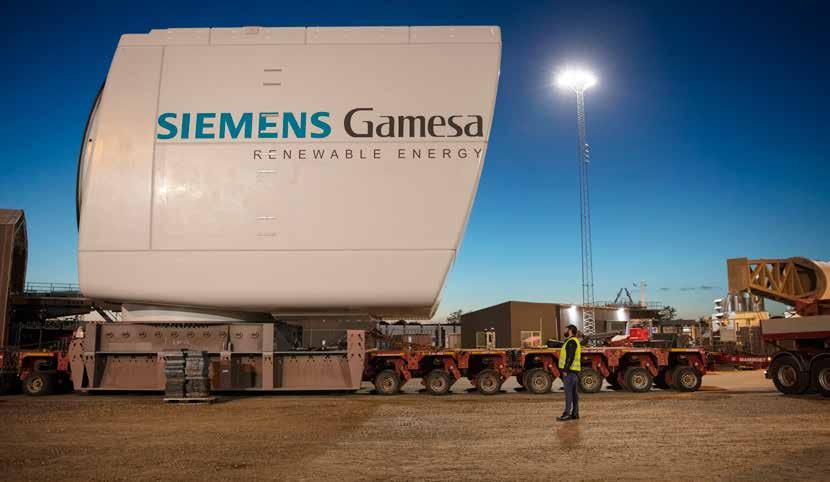
technology for its new offshore wind project as well.
The developer plans to use Mingyang’s 18.8 MW wind turbines for the 2.8 GW Med Wind project off Sicily, said to become the largest floating offshore wind farm in the Mediterranean. Renexia said it chose the Chinese wind turbine manufacturer as the company can ensure delivery by the first half of 2026, the time by which the developer plans to start installation work on the first phase of the four-phased floating wind project.
The project developer and Mingyang Smart Energy have signed a memorandum of understanding (MOU) with the Ministry of Enterprises and Made in Italy (MIMIT) that will see the Chinese OEM producing wind turbines in Italy. The agreement includes a € 500 million investment to establish a new company that will manage the production of wind turbines in Italy and initially focus on producing key components for the Med Wind project. In August, the developer said the new company, established jointly by Mingyang and Renexia, would identify a suitable area for the manufacturing site, in agreement with the government, within 90 days.
“The partnership signed today will enable us to create a value chain that also
involves domestic companies, in floating offshore wind power industry, within our borders”, said Riccardo Toto, General Manager at Renexia, a Toto Group company operating in the renewables sector.
Mingyang, which entered the European offshore wind market with the Taranto offshore wind farm in Italy, has been actively expanding its footprint in Europe since. In December 2021, the company signed a Memorandum of Understanding (MoU) with the UK Department for International Trade (DIT) to cooperate on bringing its investment plans for the UK’s offshore wind sector to realization. The agreement focused on Mingyang investing in a blade manufacturing factory, a service center and potentially a turbine assembly factory in the UK.
On 13 July 2022, the company started trading on the London Stock Exchange (LSE) and said the proceeds from the offering to be used to expand its overseas business and to scale up the production of renewable energy infrastructure.
Mingyang has also widened its technology’s reach in Europe beyond Italy as in July this year, the Chinese OEM was named the preferred supplier for a 296 MW offshore wind project in Germany, for which the developer, German clean
energy asset manager Luxcara, plans to use its 18.5 MW turbines.
Another German offshore wind developer, and one of the biggest in the world, RWE, could also be eyeing Mingyang’s technology. Namely, RWE’s Offshore Wind CEO, Sven Utermöhlen, shared on social media this summer that RWE visited Mingyang’s facilities in China, including the factories, research centre, and the OceanX floating prototype that the OEM will soon install offshore.
Mingyang was the first to announce a 16 MW offshore wind turbine. Back in August 2021, the company launched the MySE 16.0-242, saying this was the world’s largest hybrid drive wind turbine with a nameplate capacity of 16 MW.
Since then, the Chinese company has made strides in single unit capacity. In August this year, Mingyang installed a 20 MW wind turbine prototype for testing on land. The same month, the company started installing its OceanX platform offshore, a dual-turbine V-shaped platform with a generation capacity of 16.6 MW, featuring two 8.3 MW wind turbines, which makes it the world’s largest single-capacity floating wind platform, according to Mingyang.
By Adrijana Buljan
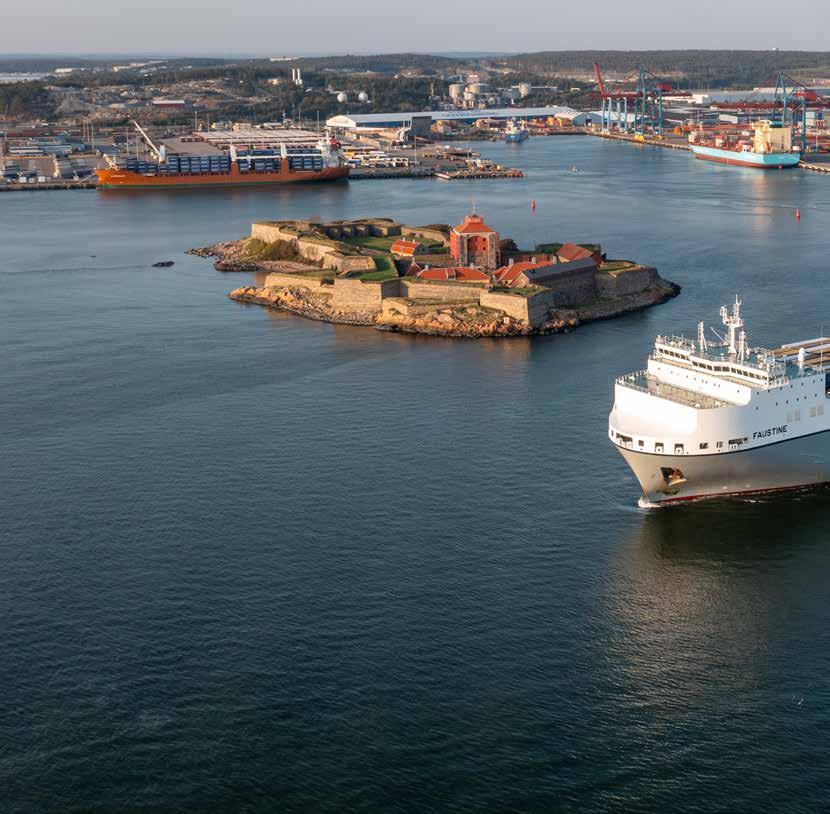
Significant investments in green transition are needed for European shipping to remain competitive, a new report found.
The report by Mario Draghi - former European Central Bank President and one of “Europe’s great economic minds” - delivered recommendations to enhance the competitiveness of the European economy.
“The future of European competiti–veness” paper acknowledged the global leadership of European shipping and identified that a fitfor-purpose regulatory and taxation framework has ensured that the sector has remained globally competitive.
The report also recognized that shipping together with aviation, are the most difficult sectors to decarbonize.
Investment needs for shipping alone will be around €40 billion each year from 2031 to 2050. Scaling up the production of clean fuels and clean and innovative technologies in Europe is set as a major objective.
In this regard, the report identified the need for adequate access to finance, including special calls for shipping under the ETS Innovation Fund.
“The Draghi report firmly recognises the global leadership role of European shipping and the need to maintain its international competitiveness. European shipping is a success story and a cornerstone of the energy, food and supply chain security of our continent. In these times of geopolitical uncertainty, it is crucial for Europe to maintain and grow the EU-operated fleet, which ensures Europe’s position

in the global supply chains as well as access to key international markets,” Sotiris Raptis, Secretary General of European Community Shipowners’ Association (ECSA), said.
“An internationally competitive shipping sector is also a prerequisite for a thriving European maritime industrial cluster, which must be part of the upcoming EU Clean Industrial Deal. It is crucial to focus investments into European industrial capacity for clean fuels and innovative technologies for shipping, to deliver on our climate
objectives and to enhance European competitiveness and security,” he added.
Upskilling and reskilling needs for the green and digital transition were also highlighted. The report estimated that up to 250,000 seafarers in the EU could be affected in the coming years, with the figure going up to 800,000 seafarers globally that will have to be reskilled in the next decade.
Competition is fierce
The report is said to be an important
reminder of the challenges Europe faces in global competition, including within the shipping sector.
In recent decades, although European shipping has grown, Europe has been gradually squeezed by both the US and China: Europe’s share of the global merchant fleet has declined, while China has gained a significant market share. Nevertheless, European shipping is highlighted as a considerable strength, with over 35% of the world’s fleet under the European flag.
“European shipping continues to grow, but others are growing faster. Therefore, we must constantly optimise our competitiveness and focus on innovation,” Jacob K. Clasen, Deputy CEO of Danish Shipping, commented.
“The Draghi Report points to the right areas, and we wholeheartedly support strengthening the framework for European shipping companies, with green transition being part of our competitiveness.”
The report noted that the EU’s decarbonization goals are also more ambitious than its competitors’, creating additional short-term costs for European industry.
The EU has put in place binding legislation to reduce greenhouse gas emissions by at least 55% by 2030 compared to 1990 levels. The US, by contrast, has set a non-binding target of a 50-52% reduction below (higher) 2005 levels by 2030, while China only aims for its carbon emissions to peak by the end of the decade. These differences seem to create massive
'Investment needs for shipping decarbonization will be around €40 billion each year from 2031 to 2050'
near-term investment needs for EU companies that their competitors do not face.
The EU is also the only major region worldwide to have introduced a significant CO2 price. This cost factor is of limited importance so far as heavy industrial production has been largely covered by free allowances under the Emissions Trading Scheme (ETS). However, these allowances will be progressively phased out with the introduction of the Carbon Border Adjustment Mechanism (CBAM).
Need for large investments in green transition
The report stressed the importance of expanding green energy and producing green fuels for the shipping sector. Trade association Danish Shipping has urged the EU to earmark funds for this transition and to simplify bureaucracy.
“A strong European competitiveness also requires shorter decision-making processes and a proactive approach to global climate agreements, particularly through the International
Maritime Organisation (IMO),” Jacob K. Clasen continued.
As already mentioned, there is also a focus on the future of the workforce, as new skills and education are needed in the shipping sector to meet the digital and green transformation.
“We must strengthen the talent pipeline and ensure that the necessary skills are in place for the future of the shipping sector,” concluded Clasen.
By Naida Hakirevic Prevljak
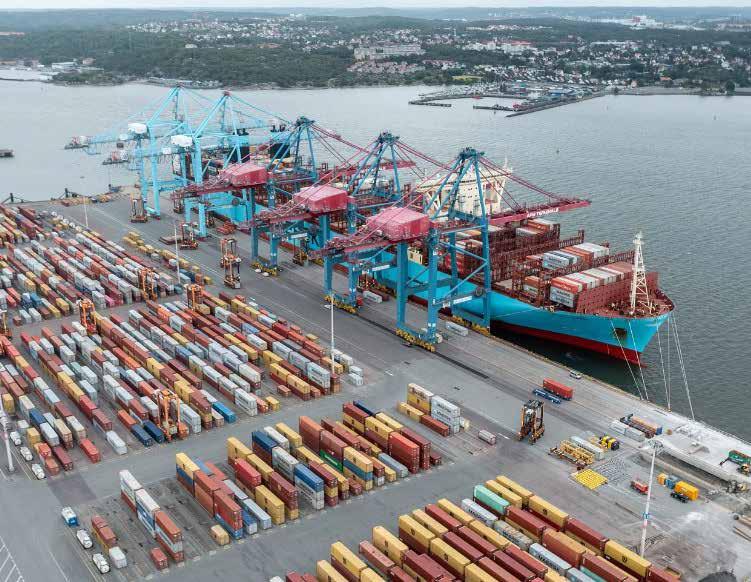







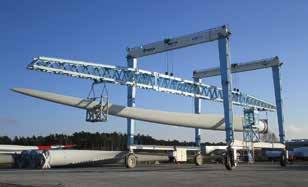
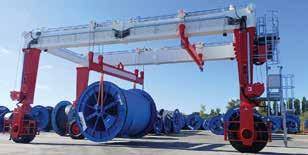



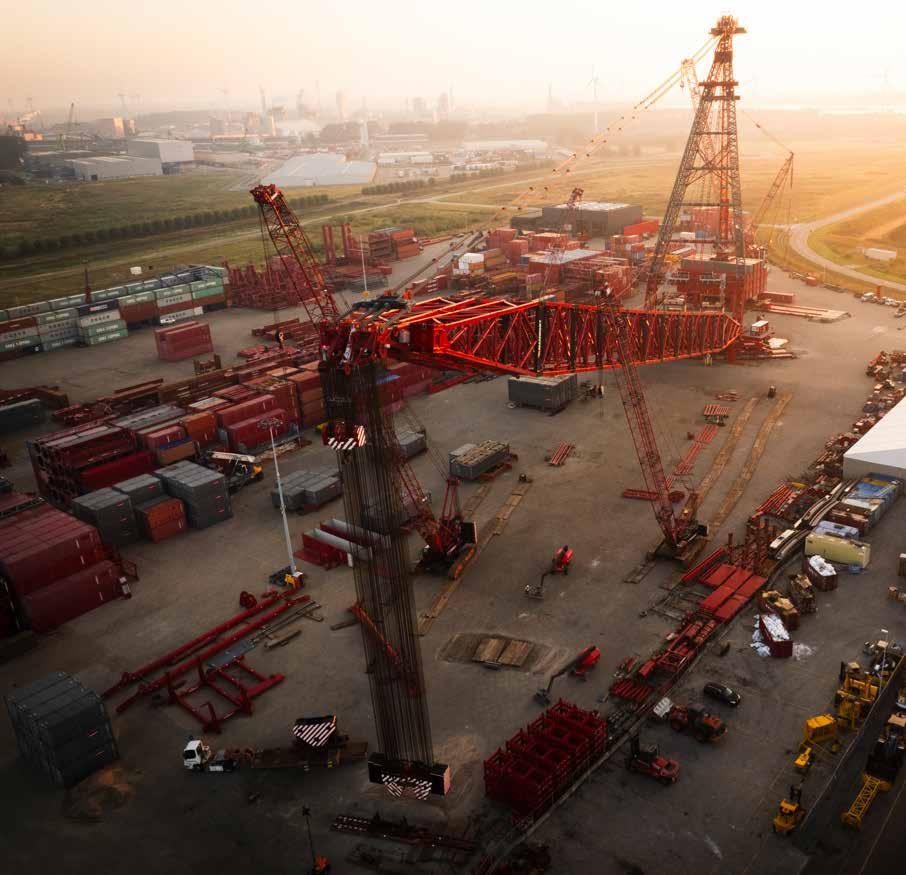
Things in the offshore wind industry continue to move at high speed. Only around four years since the first 10 MW wind turbines were installed offshore, a 20 MW model hit the onshore test site this August. The same month, a 26 MW turbine-ready vessel was delivered to its owner and a crane capable of lifting components of up to 3,000 tons was launched.
20 MW wind turbine
In December 2023, Mingyang Smart Energy produced a nacelle for MySE 18.X20 MW wind turbine at its Shanwei manufacturing base in China and said this was the world’s largest single-capacity offshore wind turbine, with a rotor diameter of 260-292 meters.
The gigantic wind turbine was installed this summer at an onshore site in Hain-
an, where it will undergo testing and demonstration.
The new model build upon the company’s previous 14-16 MW platforms and, according to the Chinese wind turbine manufacturer, is of a modular and lightweight design that provides high efficiency and reliability. Mingyang said the new model was designed for global deployment in medium-to-high wind
speed regions, with specific suitability for typhoon-prone sites. According to the company, the MySE 18.X-20 MW is equipped with active anti-typhoon technology and can withstand winds of up to 79.8 m/s. With an average wind speed of 8.5 m/s, the wind turbine can generate 80 million kWh annually, offsetting 66,000 tons of CO2 emissions, equivalent to the annual consumption of 96,000 households, Mingyang says.

The company’s 18.X MW wind turbine has already been chosen for two projects in Europe, the 296 MW Waterkant offshore wind farm in Germany (18.5 MW) and the 2.8 GW Med Wind floating wind project in Italy (18.8 MW).
The Chinese manufacturer also recently installed its OceanX floating wind platform at the Qingzhou IV offshore wind farm in Yangjiang. The floater has a V shape design that features two MySE8.3180 hybrid drive wind turbines, each with a capacity of 8.3 MW. Mingyang says that this is the world’s largest single-capacity floating wind platform, having a total generation capacity of 16.6 MW.
26 MW turbine vessel
Also in China, a jack-up wind turbine installation vessel (WTIV) was delivered to the port city of Qingdao in August. Named Gang Hang Ping 5 and manufactured by Tianjin Changer Engineering, a subsidiary of Tianjin Port Group, the vessel is said to be capable of installing 26 MW wind turbines. Gang Hang Ping 5 can simultaneously carry two sets of 20 MW wind turbines. The 29,000-ton vessel is 135 meters long and 50 meters wide, and with 135-meter legs on its jacking system, it can lift over 200 meters above water.
The WTIV, which can operate in water depths of over 70 meters, has a lifting capacity of 1,800 tons and an elevating height above the deck of 168 meters. According to Tianjin Port Group, Gang Hang Ping 5 is also the first wind turbine installation vessel in China equipped with an intelligent ship system.
The system enables route and speed design and optimization, intelligent energy efficiency management, and an intelligent integration platform. With the systems for monitoring and intelligent management, the vessel could have an approximately 20 per cent higher efficiency for wind turbine installations, Tianjin Port Group says. Gang Hang Ping 5 is also equipped with a wind-solar complementary green energy system, which can provide sufficient electricity for onboard power needs. Earlier in 2024, South Korea’s Daewoo Engineering & Construction (Daewoo E&C) and CCCC Tianjin Dredging China signed an agreement for the use of the vessel for five years.
In the Netherlands, the offshore wind supply chain is also all in on keeping up with the pace of the ever-growing offshore wind turbine components. Mammoet ended August with a bang as the company launched what it says is the
world’s strongest land-based crane at its Westdorpe facility in the Netherlands.
The new crane, SK6000, has a maximum capacity of 6,000 tons and can lift components of up to 3,000 tons to a height of 220 meters. The crane also offers full electric power capability from a battery or supply from the grid, allowing customers to reduce the carbon impact of projects, Mammoet said.
The crane is currently undergoing testing in Westdorpe and will be ready for deployment to its first project later in the year. According to Mammoet, in offshore wind, the SK6000 supports the continued constructability of next-generation wind turbines and foundations. “In the oil and gas sector, the SK6000 delivers reduced integration times to offshore floating projects, while onshore new build and expansion projects can be delivered with increased uptime”, the company said on 30 August.
A few days after Mammoet launched its new crane, Dutch wind turbine foundation supplier, Sif, said the company launched the first production line in its expanded factory at the Maasvlakte 2 site in Rotterdam, with the first plates already welded and rolled.
The upgraded manufacturing plant is expected to significantly increase Sif’s total combined production capacity to 500 kilotons per year and enable manufacturing the equivalent of 200 XXXL monopiles with a diameter of 11 meters and weighing 2,500 tons.
The company made the final investment decision (FID) to build the extension to its factory in February 2023, allocating € 328 million for the project, which Sif says will make its Maasvlakte facilities the world’s largest monopile foundation manufacturing plant.
By Adrijana Buljan

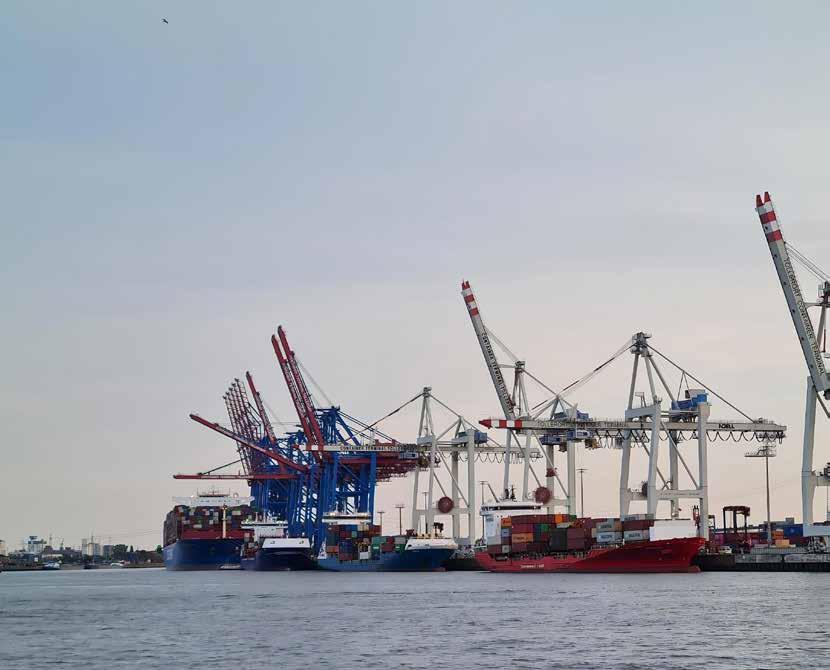
To achieve 2050 decarbonization goals and make the pace of the global energy transition even, advanced economies would need to deepen their engagement with developing countries. Among other things, this could be achieved with the creation of green shipping corridors between the Global South and the Global North. Renewable hydrogen is believed to be a sector that could play a key role in this.
Green corridors are maritime routes on which there are commercially operating ships using alternative fuels. By implementing the concept of these corridors, countries in the Global South could be supplying green fuels to the countries of the Global North.
As defined by the United Nations Conference on Trade and Development (UNCTAD), the Global South broadly comprises Africa, Latin America and the Caribbean, Asia (excluding Israel, Japan and South Korea) and Oceania (excluding Australia and New Zealand).
Besides green corridors, other parts of the value chain are considered. Through its Global Gateway initiative, the European Union (EU) aims to promote investments in critical infrastructure, including transport and port facilities in the Global South, with hydrogen sector said to be in spotlight.
In September 2024, the EU committed R628 million (approximately €32 million) in grants to promote the sustainable development of green
hydrogen value chains in South Africa. The European Commissioner for Energy Kadri Simson, South Africa’s Minister for Electricity and Energy Kgosientsho Ramokgopa and Minister of the Department of Trade, Industry and Competition Parks Tau announced two grants amounting to approximately €32 million.
The first, an R490 million (approximately €25 million) EU grant, is expected to leverage R10 billion (approximately €505 million) in private and public sector finance across the hydrogen value chain,
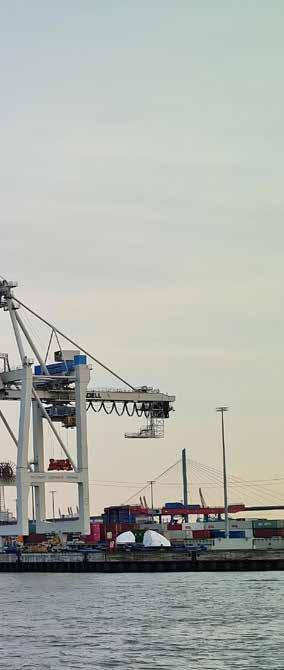
covering production, transportation, storage and downstream industries.
Through the development of sustainable green hydrogen value chains, the EU’s contribution is aimed at increasing local value addition and, thereby, supporting South Africa to move up higher in these value chains. Furthermore, the contribution is expected to support efforts toward the creation of a regional green hydrogen hub in the Southern Africa region.
The second EU grant of R138 million (approximately €6.9 million) to assist Transnet in its green hydrogen project, is expected to leverage additional funding for the green transformation of Transnet’s core operational areas, including ports, rail, pipeline, engineering and related facilities.
The AFD-Transnet Green Hydrogen project will support activities related in particular to executing studies (market, legal and feasibility studies as well as impact assessments) and pilot projects focused on the production and storage of low-carbon hydrogen. Moreover, it will back activities related to mobilizing technical assistance to structure Transnet’s green hydrogen strategy and allow for the scaling up of green hydrogen projects in South Africa.
Commissioner Simson commented: “Our cooperation in support of South Africa’s green hydrogen agenda aims to accelerate the green transition, drive sustainable development, create new economic opportunities, and build a more sustainable future for the region.”
EU and Uruguay to strengthen energy cooperation, hydrogen in focus
In September, Simson also visited the South American country Uruguay. The visit is said to be a part of the implementation of the commitments made as part of the EU-Uruguay memorandum of understanding (MoU) on renewable energy, energy efficiency and renewable hydrogen, which was signed in Brussels, Belgium, in 2023.
The commissioner’s agenda, among other activities, included participating in the fifth European Investment Forum on energy, as well as co-chairing the fourth EU-Uruguay Energy Dialogue with Uruguay’s Minister of Industry, Energy and Mining Elisa Facio to discuss the implementation of the MoU, with a particular focus on green hydrogen and energy efficiency.
During the forum, Simson reflected on the EU’s energy achievements,
mentioning green hydrogen as a “technology with enormous potential to decarbonise key polluting sectors.”
The commissioner also noted that many European countries already estimate they will need more hydrogen or e-fuels than they can produce, adding:
“Europe has a strategic interest in developing a global trade in hydrogen and renewable fuels. Imported hydrogen and e-fuels at accessible prices will help Europe’s competitiveness and European industry to achieve their decarbonisation targets, in particular in transport and steel production. This creates great complementarity with partner countries with strong renewables potential and interested in creating trade corridors, like Uruguay.”
“Europe is one of the world’s largest energy importers. So we want to leverage this to support our partners around the world in their economic and green transitions, to become producers of clean energy and sustainable fuels. Latin America, and particularly Uruguay, is a strategic ally and a key partner in this effort. Uruguay stands poised to become a leading green producer of hydrogen and its derivatives, such as e-fuels, e-methane and ammonia.”
Renewable hydrogen sector’s role in global energy trade
The International Renewable Energy Agency (IRENA) found that the renewable hydrogen sector could play a crucial role in reshaping global energy trade, creating opportunities for new players, including developing countries.
According to the report “Shaping sustainable international hydrogen value chains,” low-carbon hydrogen is
key to achieving the goal of reaching net-zero emissions by 2050, but the techno-economic potential to produce low-cost, low-carbon hydrogen is not evenly distributed globally.
“The regions with the potential to produce it may not align with those that will have high future demand. This could lead to the creation of a new global market that not only trades low-carbon hydrogen but also its derivatives. This may reshape global energy trade and create opportunities for new players, including developing countries,” IRENA said.
From an economic standpoint, the report found that the cost-effective production of renewable hydrogen and its derivatives relies on access to cheap renewable energy, as well as access to water and land resources. Future market developments are expected to be “significantly” influenced by regulations and incentive schemes aimed at promoting global hydrogen production.
From a governance and strategysetting perspective, there have been “significant” developments, IRENA stated, noting that the G7 members, as future major hydrogen demand hubs, have been very active in hydrogen policy-making. Additionally, more and
more countries, including developing countries, are moving forward with strategy launches and policy developments. However, compared to G7 members, many developing countries have limited budgets and project developers face high financing costs. Consequently, their strategies often focus on creating a businessfriendly environment through enabling policies, IRENA pointed out.
It is also worth mentioning that countries in the Global South have acknowledged the predicted import demand noted in the national hydrogen strategies of the Global North and have taken an exportoriented approach to address these markets. For this approach to be successful, however, the projected growth of the global hydrogen market will need to materialize as anticipated, IRENA claimed.
In terms of environmental impact, renewable hydrogen is said to emit, on average or typically, less GHG than blue hydrogen over its lifecycle. At the same time, when considering hydrogen production for export, IRENA noted that it is crucial to address the potential for any environmental burdens being transferred to developing countries, if such an offloading of adverse impacts is to be prevented.
When it comes to long-distance transportation of renewable hydrogen and derived products, different carrier options exist, with varying infrastructure requirements and technical considerations. According to IRENA, most likely, there will be a multi-carrier future.
The report also found that social acceptance and community involvement play crucial roles in the successful implementation of new energy technologies, particularly in the context of large-scale infrastructure development.
“By promoting local industrial development, the co-benefits of renewable hydrogen production can be increased. Developing countries could create more sustainable jobs, add long-term value and improve their international competitiveness. They could also reduce the risks associated with the global hydrogen trade by participating in both the upstream and downstream activities of renewable hydrogen production. Therefore, it will be necessary to adopt a comprehensive industrial development policy to address the complexities of this changing landscape in a fair and equitable manner,” IRENA concluded.
By Aida Čučuk

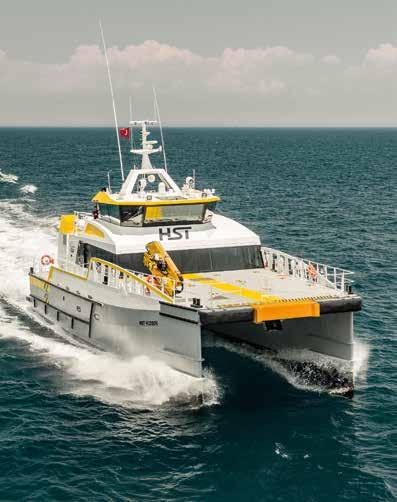
For over 75 years already, REINTJES Benelux –based in Antwerp – handles sales and services of REINTJES gearboxes and reversing gears for Dutch shipping for short-sea, sea going, dredging, fishery, inland vessels and luxurious yachts.
Our service department is available for all spare parts as well as repairs. Whether it is an inspection or repair, our team of experienced service engineers is always there for you and assures you the reliability and quality REINTJES represents.
2x ZWVSA 440 U 1081 kW @ 2000 rpm
|
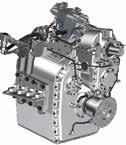
Haven 2 | Unit F | 2030
Tel +32 (0)3 541 92 33 | www.reintjes-gears.com
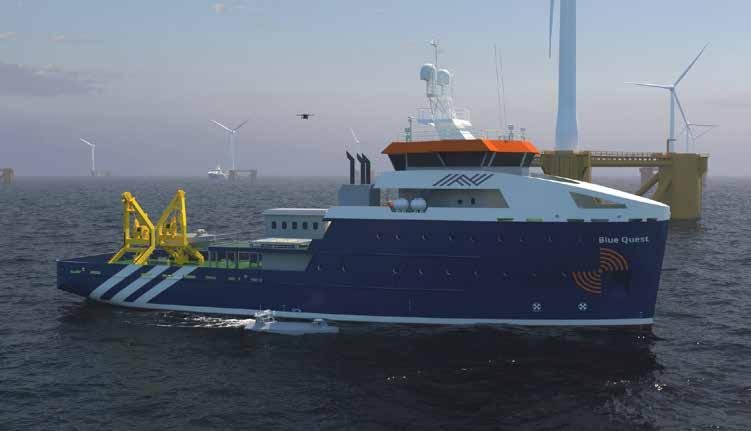


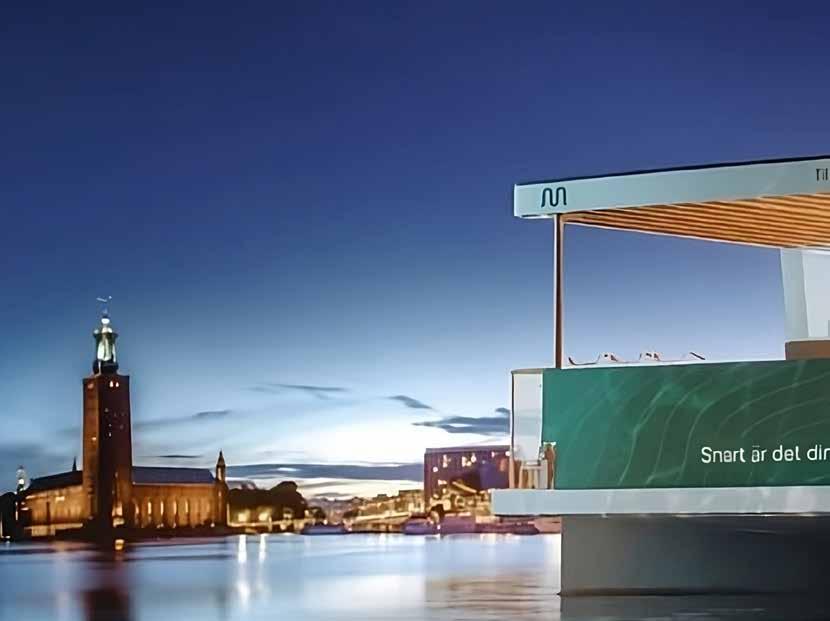
MF Estelle, the ‘world’s first’ autonomous electric ferry, has completed its journey between two major islands in central Stockholm, demonstrating the potential for unmanned, sustainable transport, the RISE Research Institutes of Sweden has unveiled.
MF Estelle’s trial in Stockholm
Designed and built by Norway’s ferry builder Brødrene Aa, MF Estelle was launched in June 2023, since when it has been fully-operational.
During a recent trial, the ferry was operated remotely from Trondheim, Norway-600 kilometers away from Stockholm. The demonstration was reportedly performed from the island of Kungsholmen, where the Stockholm city hall is located, across Lake Mälaren to Stockholm’s biggest island, Södermalm.
“We wanted to test whether the ferry could cross a large bay in central Stockholm and dock on the other side all by itself, after just a push of a button 600 kilometers away in Norway. The trial was the first ever of its kind and showed that it is possible. In this way, we can learn togeth-
er and create a market for smart ships,” Håkan Burden, senior researcher at RISE Research Institutes of Sweden, remarked.
The ‘sustainable’ design and features of MF Estelle
The 12-meter-long MF Estelle-owned by Norway’s transportation company Torghatten Midt-is described as a vessel built with ‘sustainability at its core.’
The ferry is a catamaran, meaning it is ‘energy efficient by design’. It was engineered in carbon fiber at Brødrene Aa’s main shipyard in Hyen, on the west coast of Norway, which helps it reduce its weight and thus optimize energy usage.
Furthermore, it was fitted with an autonomous navigation system that was developed by the Norwegian University of Science and Technology, and a
propulsion system driven by electricity supplied via onboard solar panels. In the beginning, it is said that there will be an operator on board MF Estelle, but over time, there are plans to ensure the ferry will be completely self-driving and monitored from land. A radar, lidar, cameras, ultrasonic sensors, AI, and GPS were installed in the ferry to help it navigate through the water by scanning the environment.
The minds behind the initiative Norway’s ferry operator Torgatten along with compatriot autonomous solutions supplier Zeabuz are said to be behind the mobility concept in Stockholm - a city that has long been pushing for new autonomous solutions within its infrastructure-behind ‘Zeam’ (which stands for ‘zero emission autonomous solution’), and the 5G- and IoT-powered MF Estelle.
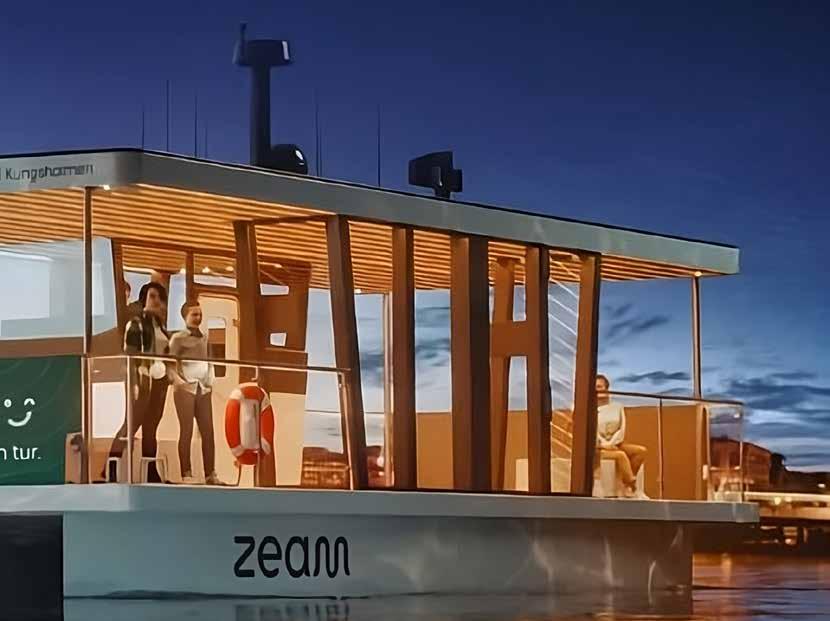
“We aim to change the way we think about mobility by creating shortcuts in cities, utilizing urban waterways as virtual bridges. Our collaboration with Torghatten seeks to connect communities affordably and sustainably, not only in Stockholm but in the large number of cities with navigable waters worldwide,” commented Erik Dyrkoren, CEO of Zeabuz.
As disclosed, at present, remote monitoring of MF Estelle is a one-way communication-from the ferry to the company. However, there are plans to enable two-way communication, for which 5G would be ‘vital’. To this end, Zeabuz revealed that the company would work with the Swedish mobile network provider Tele2.
According to a statement from the company, Zeabuz has been running a mobility research project since early 2023, and has been an active participant of the Boatplan Stockholm iniative that aims to convert all ferry traffic in the city archipelago to ‘100% emission-free operation’, with electricity or hydrogen as fuel.
In August 2024, neighboring Norway expressed interest in autonomous vessels, too. Specifically, the country’s Haugesund municipality signed a letter of intent late that month with Zeabuz, Torghatten and zero-emission solutions supplier SEAM for an emissions-free autonomous city boat. The plan is to initiate the boat’s route and test the technology starting in the autumn of 2025.
Zeabuz has also worked together with Transportstyrelsen (the Swedish Transport Agency), which was responsible for the final approval of the autonomous technology behind MF Estelle.
Moreover, together with Torghatten, the RISE Research Institutes of Sweden, Norway’s classification society DNV, the Ports of Stockholm, and sustainable urban waterway transport company Vattenbussen, Zeabuz is part of the Policy Lab Urban Zjöfart (PLUZ) project, financed by the Swedish Transport Administration’s maritime portfolio.
RISE has highlighted that this project has the goal of contributing to international policy work within the International Maritime Organization (IMO) and the EU Maritime Safety Agency (EMSA). The results of the project are hoped to pave the way for new conditions for eco-friendly mobility (and automation) services.
Now that MF Estelle is up and sailing, the team behind the electric ferry is looking into broader applications of autonomous technology. Reflecting on the 18-ton ferry’s maiden voyage, Brødrene Aa has stated that the development and production of MF Estelle was ‘a journey of great learning.’
“Cooperations like these keeps us staying one step ahead when it comes to technological innovations. Hopefully it can show prospective partners how the future on seas could look like,” Brødrene Aa concluded.
By Sara Kosmajac
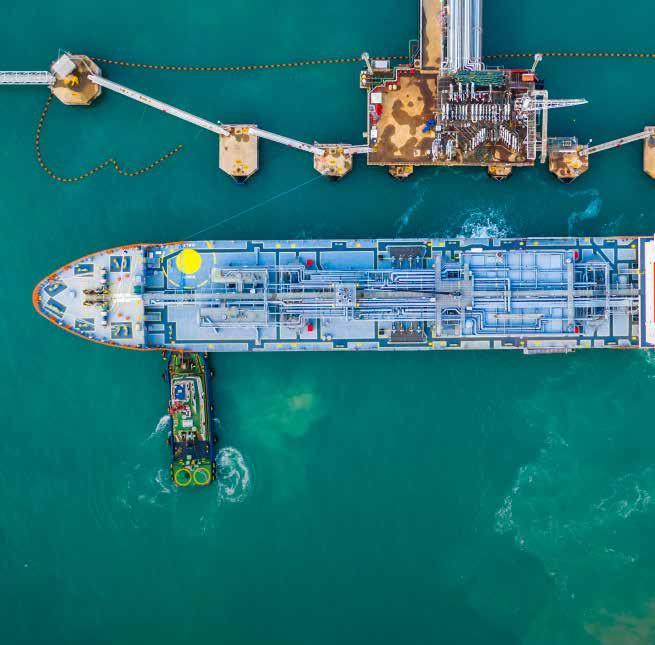
The maritime industry is inching closer to achieving a sustainable transition to zerocarbon fuels, thanks to improvements in ship readiness and fuel handling technologies, as detailed in Lloyd’s Register’s (LR) Maritime Decarbonization Hub’s latest Zero Carbon Fuel Monitor (ZCFM) report.
As disclosed in the update, LR’s Maritime Decarbonization Hub discovered ‘significant advancements’ in the handling, storage and utilization of alternative fuels onboard vessels that are driving the industry’s transition to zero or near-zero carbon emissions.
More precisely, the newest ZCFM reflected on the final stage of the fuel
supply chain – the ship – and explored the current global fleet’s readiness for sustainable fuels like ammonia, hydrogen, methanol and biofuels (fatty acid methyl esters, or FAME, and hydrotreated vegetable oil, or HVO).
Technology preparedness levels for all reviewed fuels have ballooned over the past year. Simultaneously, the report
indicated an uptick in commercial trials and applications aimed at boosting the investment readiness levels (IRLs) within the vessel supply chain stage.
Moreover, community readiness levels (CRLs) have, too, been on an upward trajectory, which the report attributed to an ‘increasing awareness’ of the urgency to meet the International

Maritime Organization’s (IMO) 2030 interim target of achieving 5% vessels running on low-to-zero carbon fuels.
Ammonia
LR highlighted ‘considerable’ progress in ammonia fuel technology. According to LR, there were 31 ammonia-capable and over 400 ammonia-ready vessels in the existing fleet and on order, with the majority of the ammonia-capable ships being gas and bulk carriers.
In April 2024, Spanish hydrogen transport solutions provider H2SITE was greenlit by LR via approval in principle
(AiP) for its AMMONIA to H2POWER technology for onboard ammonia cracking.
As explained, after the process, the resulting hydrogen can further be used by hydrogen fuel cells that can add to the vessels’ electrical power. Alternatively, the hydrogen could be consumed directly in an internal combustion engine (ICE).
On the other side of the world, Japan’s ‘Sakigake’ tugboat was successfully converted to an ammonia-fuelled vessel in late August 2024, through the efforts of shipping giant Nippon Yusei Kabushiki Kaisha (NYK) and compatriot IHI Power Systems in collaboration with the classification society ClassNK.
Part of a Green Innovation Fund Project initiated in October 2021 under Japan’s New Energy and Industrial Technology Development Organization (NEDO), the tugboat will reportedly operate in Tokyo Bay for a 3-month demonstration period.
Hydrogen is highlighted as having 78 vessels capable of using the fuel in LR’s update, primarily in coastal and shortsea shipping. The overall readiness, if it were assessed for larger types of ships only (e.g. an ocean-going boxship) would be lower, the report suggested, ascribing this to the effect that the ‘practicalities’ of these solutions for large ships could affect their operating patterns or cargo carrying capacity.
Nonetheless, over the past years, there have been numerous developments in the realm of hydrogen. In late 2023, LR
gave the go-ahead to BeHydro, a joint venture between CMB.TECH and Anglo Belgian Corporation (ABC), via a type approval for its hydrogen-powered dual-fuel engine that has the potential to cut CO2 emissions ‘by up to 85%’.
That same year, H2 Barge 1, a second inland containership converted to run on hydrogen by Dutch shipbuilder Holland Shipyards Group for compatriot shipowner Future Proof Shipping (FPS), was launched. This vessel is estimated to lower GHG emissions by 2,000 tons of CO2 annually.
The trial for H2 Barge 2 was completed in March 2024, with projections it could decrease GHG emissions by 3,000 tons of CO2 per year.
LR’s report revealed that methanol-driven technology is currently deployed on 315 ‘methanol-capable’ ships with around 500 more classed as ‘methanol-ready’.
According to a white paper by the Methanol Institute, two crucial frameworks, namely the EU Emissions Trading Scheme (EU ETS) and FuelEU Maritime, could help the maritime industry adopt alternative fuels like methanol ‘faster’ and get much closer to the net zero by 2050 target.
To be precise, the rising costs of non-compliance with FuelEU’s GHG intensity reduction targets paired with the gradual phase-in of EU ETS, have led to bio- and e-methanol, in particular, becoming a ‘compelling’ solution by helping ship operators avoid the rising penalties.
In May 2024, LR and Swedish ferry company Stena Line joined forces to work on a retrofit project on two fast roll-on/roll-off (RoRo) vessels with methanol propulsion. As LR’s latest update reiterated, these ships are set to be dual-fuelled, building on the conversion to methanol of the Stena Germanica in 2015.
Biofuels
LR stated that there are a number of vessels presently running on B100 fatty acid methyl esters, which are 100% biodiesel and considered near net zero if the carbon released during vessel operation is ‘sufficiently offset’ by the carbon absorbed by the fuel production resources.
Since biodiesel is considered a drop-in fuel, meaning little to no modification is needed, the technology and infrastructure investments are minimal and are believed to pose low risk.
A notable development from this space happened in June 2024 when The Global Center for Maritime Decarbonization (GCMD) and Japanese shipping titan NYK Line wrapped up the ‘first-ever’ bunkering of a biofuel blend (FAME + VLSFO) on NYK’s short-sea vehicle carrier.
On the other hand, HVO—also known as hydro-processed esters and fatty acids or HEFA-is indistinguishable from petroleum gas oil, the report asserts, and, therefore, requires virtually no onboard modifications.
2024 and beyond: an outlook
Although the update acknowledged progress, it also pointed out the areas in need of more development and investment in order to sail to a greener future more efficiently.
One such area is the issue of safety protocols, which the report believes
need additional improvements. Another would be crew training for the handling of alternative fuels as well as the challenges related to investment because of supply chain uncertainties, including but not limited to fuel availability and regulatory frameworks.
In this context, the report proposed that a policy intervention to unlock the economic feasibility of investing in cleaner fuels is necessary to ultimately kick open the door to ‘accelerated technology readiness’.
Governments and regulatory bodies could opt to introduce such incentives and establish a clear regulatory system that mandates or encourages the adoption of zero or near-zero carbon fuels, the report concluded.
By by Sara Kosmajac
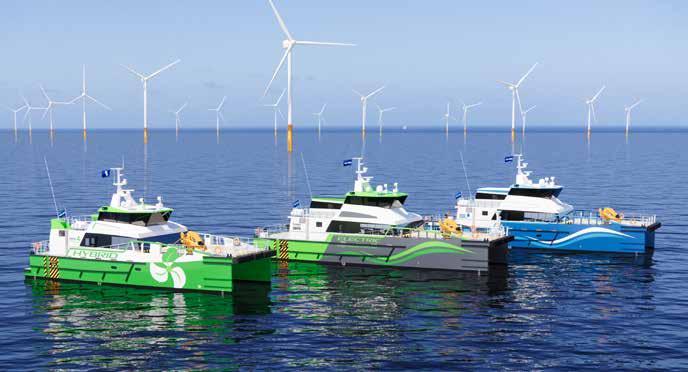








































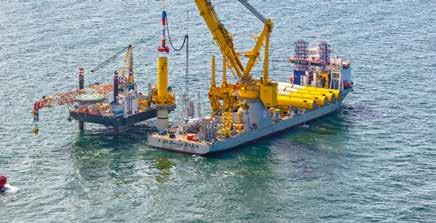


































The Blue Economy Cooperative Research Centre (CRC) has unveiled a report, led by the University of Western Australia, outlining seven key recommendations to drive the advancement of Australia’s wave energy industry.
According to Blue Economy CRC, wave energy could boost Australia’s AUD 118 billion (approximately $81,4 billion) blue economy, driving opportunities in fabrication, installation, and marine operations.
Australia already has existing elements that are important for wave energy sector development, such as a skilled workforce for offshore infrastructure and renewable industries, Blue Economy CRC said.
However, research institutions like universities and the Commonwealth
Scientific and Industrial Research Organization (CSIRO) add further strength, enabling innovation in the sector. The potential for market expansion includes grid connections and powering remote facilities, particularly in coastal regions that are poised to benefit economically.
Wave energy stands out as a key player in helping Australia meet its net zero targets, said Blue Energy CRC. With the country aiming to slash emissions by 43% by 2030 and hit an 82% renewable electricity share, the inclusion of wave energy in its energy
mix could address the growing demand for dispatchable power.
The National Electricity Market (NEM) forecasts show significant growth in renewable capacity by 2050, yet a gap in consistent power supply remains – a gap that wave energy could potentially fill.
The report calls for a strategic approach to wave energy, emphasizing its potential as a critical resource for Australia, outlining seven key recommendations to advance the sector, including incorporation into national and state planning, evaluation by
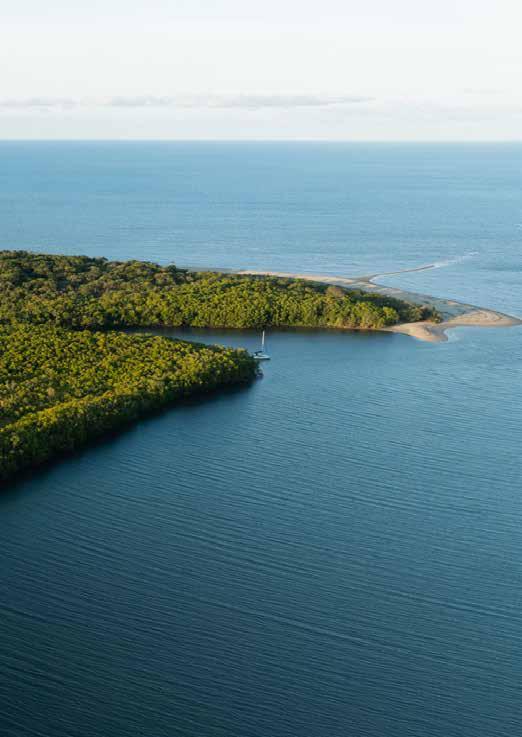
the Australian Energy Market Operator, inclusion in sustainable ocean plan, consistent funding, coastal protection guidelines, data sharing, and climate analysis.
Background of seven key recommendations
The overarching recommendation of this report, according to the Blue Energy CRC, is: “Federal and State Governments in Australia should take a strategic view of the wave energy industry in order to achieve the maximum national benefit from this potentially critical national resource.”
However, there are a few other themes that the development of wave energy in Australia should cover, according to the report.
1. Incorporation into national and state planning
Federal and State governments must integrate wave energy into planning strategies. The Australian Renewable Energy Agency (ARENA) should fund a study to assess the national benefits of the wave energy industry, including its role in economic and social development, sovereign capability, and environmental sustainability.
According to the report by Blue Energy CRC, the benefits of alignment with the international momentum in wave energy should be considered together with the Australian alignment with the International Energy Agency Ocean Energy Systems roadmap for 2050. This should also include encouraging longterm investor confidence in the sector.
2. Evaluation by Australian Energy Market Operator
The Australian Energy Market Operator (AEMO) does not consider wave energy currently, and this report says that AEMO should evaluate wave energy in its integrated system plan (ISP) to gauge its potential impact on energy storage needs by 2050.
Evidence from similar markets, like the UK’s EVOLVE study, shows that adding 10 GW of wave energy could save up to AUD 2.76 billion annually by 2040, thanks to reduced storage and generation demands. For Australia, introducing wave energy is expected to cut storage capacity requirements, translating into lower overall costs.
Modeling from three local grids on the south coast shows consistent results, reinforcing the idea that wave energy could deliver dispatchability and cost benefits across Australia’s southern margin. These findings point to a broader potential, suggesting that the systemwide implications of wave energy can only be fully realized through an integrated national approach.
3. Inclusion in sustainable ocean plan
Wave energy should be part of the Sustainable Ocean Plan alongside other renewable sources, Blue Energy CRC notes. This recommendation highlights the importance of collaboration between technology developers, research institutions, and local governments to foster the industry’s growth.
Cross-sector and cross-departmental joint activities could increase impact and benefits through education, R&D,
and business activities. Australia’s rural, regional, remote (RRR) coastal areas could play a significant role in this case.
4. Consistent funding
Wave energy projects at different scales need funding to validate the technology and showcase the national benefits over longer periods of time, noted Blue Energy CRC. Multi-year field demonstrations are crucial for testing long-term dispatchability and assessing environmental impacts.
A “technology push” funding to accelerate wave energy development is a key mechanism, according to the International Energy Agency Ocean Energy Systems roadmap.
5. Coastal protection guidelines
In addition to energy production, wave energy converters (WECs) could offer coastal protection, reducing flood and erosion risks that are expected to worsen with climate change, according to the Blue Economy CRC report.
Controlled wave alteration could shield assets valued at up to AUD 25 billion, though further study is needed to explore the link between wave energy generation and coastal protection.
The report said that coastal protection is usually dealt with by local councils without the needed resources to study the possible benefits of wave energy.
An integrated national study should establish guidelines for using wave energy in coastal protection, enabling councils to make informed decisions on implementing these technologies. This is said to provide benefits in both climate change mitigation and adaptation.
6. Data sharing
Federal and State governments must promote baseline data collection and information sharing across jurisdictions to accelerate industry growth, Blue Energy CRC said. A coordinated environmental research plan would help de-risk wave energy projects and streamline approvals.
The government plays an important role in baseline data collection or mandating sharing from other industries or sources, in order to reduce the burden on project developers.
Cooperation among Australian government agencies, as well as the publication of guidelines and policies, can enhance the science-based assessment,
alignment, and approvals procedures, and incorporation of wave energy into existing marine estate management plans, said Blue Energy CRC.
To reduce the risk associated with the approvals process and promote the sustainable development of the industry, a coordinated strategic environmental research strategy needs to be created.
7. Climate analysis
In order for the developments in the wave energy sector to continue growing, more research on the wave climate is needed. In shallow water regions, where WECs would probably be primarily deployed, high-resolution, long-term wave climate studies are needed to ensure accurate assessments of the resource and inform engineering designs.
According to Blue Energy CRC, the studies should focus on reliable estimates of extreme wave conditions for engineering design (also needed for the offshore wind industry), wave directional characteristics such as wave spreading around the mean propagation direction, and weather windows for sage installation and maintenance.
By Zerina Maksumic
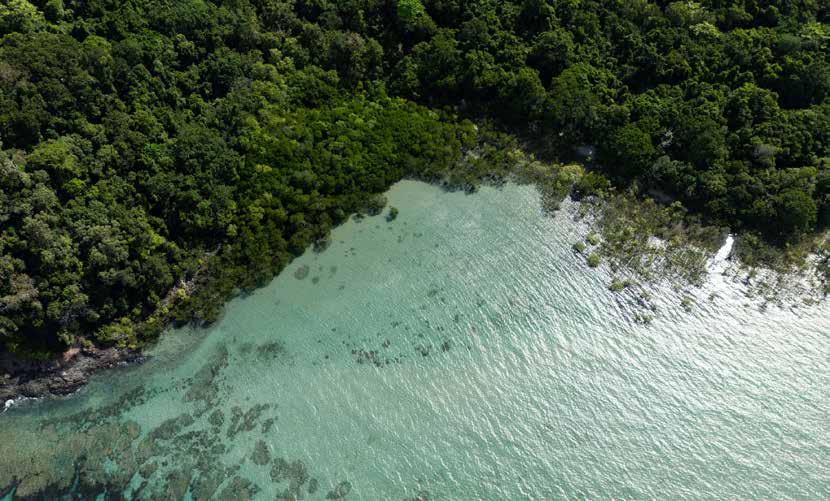
Proven results
■ Reliable protection of equipment
■ >25% less handling & maintenance
■ Up to 30% volume reduction

Properties

■ Extreme load capacity ■ Good pumpabillity in your systems
■ Certified biodegradable & OEM-approved ■ Worldwide available
Would you like to know more?
Ask for the white paper and let’s get in touch!


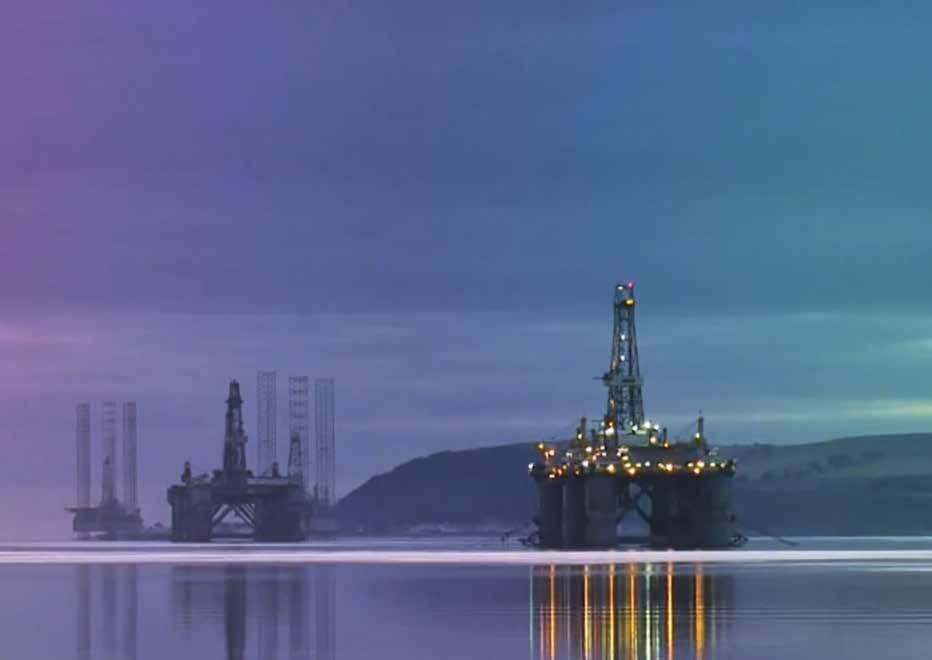
With myriads of factors at play in the global offshore energy arena, the United Kingdom (UN) has its fair share of issues to contend with, however, one of the prevailing ones of late for Britain’s oil and gas sector revolves around the fiscal regime woes that are affecting investments on the UK Continental Shelf (UKCS), putting at risk the future of the North Sea’s fossil energy plays and the country’s energy security, according to global experts, as cutting the oil and gas cord before alternative energy sources are in place to take over is seen as a recipe for disaster that will leave the UK at the mercy of imports and energy price shocks.
Avoiding such a scenario boils down to more action toward decarbonized oil and gas production to power homes and businesses with low-carbon and zero-emission energy rather than pulling the plug on fossil fuels too soon.
Change is inevitable and spicing things up can spur greater innovations and improvements but the winds of uncertainty that are buffeting the UK’s oil and gas industry and bringing clouds of unpredictability over the North Sea’s hydrocarbon investment landscape are perceived to be harbingers of potential irreversible damage unless a new fiscal regime enters the scene since the North Sea’s oil and gas future hangs in the balance, based on a new Wood Mackenzie analysis, which delves into the critical challenges to developing a more predictable tax policy that works for both the industry and the government.
The UK’s regulator, the North Sea Transition Authority (NSTA), outlined in its recent ‘Emissions Monitoring Report’ that the North Sea oil and gas industry achieved a drop in overall greenhouse gas (GHG) emissions for the fourth year in a row last year, bringing the total reduction efforts to 28% between 2018 and 2023, paired with a 49% reduction in flaring. Despite progress, a greater focus on making production cleaner and pursuing electrification is advised for the sake of the sector’s future in light of the country’s plans to hit a 50% reduction in emissions by 2030, followed by a 90% cut by 2040, and net zero aspiration by 2050.
As Britain closes in on its methane abatement aspirations seven years ahead of the 2030 deadline and surpasses the 25% reduction target for production emissions four years ahead of schedule while looking at the natural resources of
up to 5 billion barrels of oil and gas, a 60 GW target for offshore wind, and up to 78 GT of carbon storage potential, many believe that the country’s oil and gas industry is well positioned to rise to the energy transition challenges as long as it keeps its eyes on safety, emissions cuts, timely well decommissioning, and greater diversity.
Oil & gas in need of stable tax regime
Given the UK government’s history of ad hoc changes within the oil and gas sector, Wood Mackenzie is convinced that the government needs to pursue far more predictable fiscal policy settings to enable greater long-term stability, since it has already acknowledged the duo’s production will not be going anywhere for “decades to come.”
The energy market intelligence and research player seems to agree with the
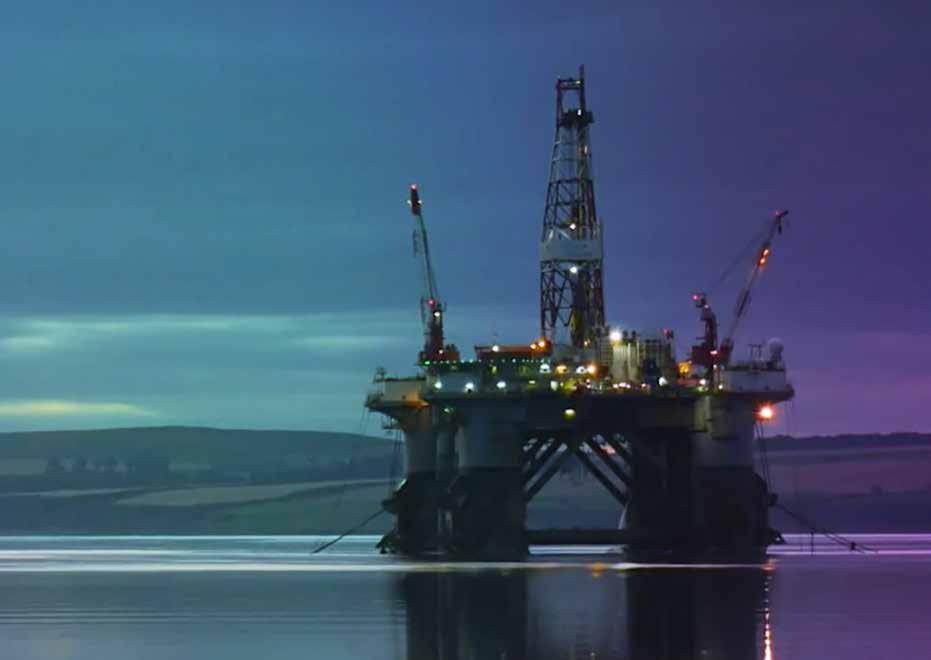
view other analysts have shared regarding the recently proposed modifications to the Energy Profits Levy (EPL), which is currently slated to expire in 2030, as it underlines that the windfall tax has created “unparalleled sector uncertainty and consternation.” Wood Mackenzie admits that designing a system that is equitable to both government and industry will be “challenging,” but it still underlines that such an endeavor is “essential to ensuring clarity before the impact on investment in this very mature sector becomes irreversible.”
Moreover, the energy market intelligence provider notes that for a predictable fiscal system to be introduced, government and industry engagement need to address several key factors, including defining a price ‘shock’ and its duration alongside determining the appropriate government share to apply during a price shock and how, or if, it should vary, including a simple on/off switch, stepped rate increases, like the UK’s personal income tax bands, or a sliding scale. Aside from these elements, Wood Mackenzie also mentions the importance of deciding whether to target only excess income
or applying a measure to a company’s entire taxable income, as is current practice; creating a system to fairly tax companies with both oil and gas production when the prices of these commodities can fluctuate in opposite directions; and simplifying the current tax system.
Graham Kellas, Senior Vice President, Global Fiscal Research at Wood Mackenzie, commented: “North Sea oil and gas operators are trying to make long-term financial decisions beyond 2030, but the current fiscal regime does not allow for such clarity. Price responsiveness, predictability, fairness, simplicity and transparency must all be considered to ensure the correct outcome is reached at what is a crucial juncture for the sector.
“This will be a difficult conversation, with the mechanisms required for an improved system complicated by having to negotiate the myriad of economic outcomes and investor types. But this must be tackled, and a solution found, quickly. Achieving consensus on the issues will be highly challenging, not just between industry and government, but between the companies themselves. And there are potential conflicts between the objectives,
such as simplicity versus fairness and responsiveness versus transparency.”
The company’s report further emphasizes that the solutions need to be “predictable, transparent, simple to administer and self-adjusting during periods of price volatility to minimise the need for further government intervention.”
Net zero ambition’s price tag
While campaigning for a homegrown energy transition that makes the most of Britain’s people and industrial strengths to usher in a secure, sustainable and skilled future, Offshore Energies UK (OEUK) described the nation’s transformation to cleaner energy both as the biggest engineering project the UK has seen since the Second World War and the country’s largest financial undertaking. This follows an estimate from the government’s Office for Budgetary Responsibility (OBR), which calculated the net zero cost at £1.4 trillion or over $1.8 trillion, with the lion’s share needing to be bankrolled by businesses.
David Whitehouse, CEO of Offshore Energies UK, remarked: “Success will be
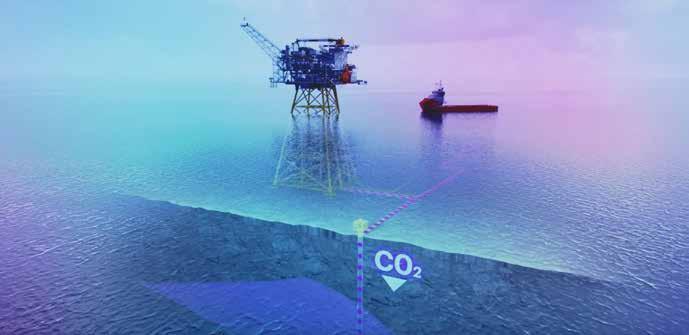
built on partnerships with industry unlocking the private sector investment needed to achieve the homegrown energy transition and economic growth we all want. This means listening to expert people across our sector, backing our supply chains and safeguarding the jobs of thousands of skilled workers across the UK.
“But I remain concerned the new government’s tax changes will have profound consequences for this sector and its people. The new government committed to safeguarding jobs in its manifesto and must listen to those working in the sector.”
Since OBR’s findings indicates that the government requires partnerships with the industry to put plans into action, unlock the necessary investment, and kickstart the next chapter of economic growth, OEUK reinforced its continued concerns over the government’s plans to raise and prolong the Energy Profits Levy while championing further efforts to enable the UK’s energy security and low-carbon future.
Whitehouse urged the government to pick “a homegrown energy transition that makes the most of our people and businesses” while pinpointing the alter-
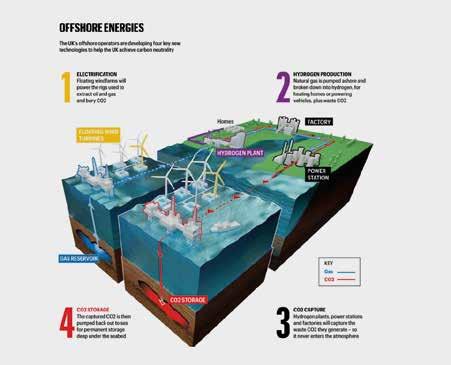
native revolves around “importing ever more energy, skills and infrastructure and subtracting value from our economy.”
Europe’s largest carbon storage market
One way for the oil and gas industry to curb its carbon footprint has been identified to lie in the pursuit of carbon capture utilization and storage (CCUS) growth, based on OEUK’s report, which spotlights the country’s opportunity to repurpose existing infrastructure and capitalize on the expertise of its workforce to build “a world leading CCUS industry using the UK’s strong oil and gas heritage.”
While the report confirms all the ingredients are in Britain’s possession to enable the nation to become the largest carbon storage market in Europe, thanks to 78 Gt of CO2 storage potential, equaling nearly 200 years of emissions, there is no certainty that the country will take full advantage of this opportunity due to the opposition to CCS, as climate and environmental activists tend to see this technology in a negative light, often portraying it as a lifeline fossil fuels can cling to during the decarbonization journey.
While the UK’s 2030 CO2 storage target is set at 20-30 million tonnes per year, the new OEUK analysis shows the sector could create 50,000 new jobs and protect a further 100,000 in industrial regions across the nation while also contributing billions to the economy between now and 2030 by bringing £100 billion or $130.8 billion to the supply chain by 2050.
Enrique Cornejo, Head of Energy Policy at Offshore Energies UK and lead author of the report stated: “There is no viable alternative to CCUS for decarbonising several energy-intensive industries, such as cement manufacturing, which contributes 7% of global CO2 emissions. To put this in perspective, if cement production were a nation, it would be the third-largest emitter in the world.
“Gas-fired power offset with carbon capture will also play a critical role in delivering the government’s net zero power ambitions by 2030. Low carbon power generation must come from reliable supplies that can be easily called upon when the wind doesn’t blow and the sun doesn’t shine.”
Hopes of unleashing CCUS growth
In the aftermath of the £22 billion or close to $28.8 billion funding announcement, spanning over 25 years, OEUK expressed optimism in the investments ability to set the UK’s CCUS sector in motion, starting with the deployment of the Hynet cluster in Merseyside and the East Coast Cluster in Teeside and Humberside, known as Track-1 clusters. This is expected to build the foundational infrastructure needed to step up the country’s CCUS game.
Since the technology has been deemed by the Climate Change Committee (CCC) to be a necessity, not an option to reach net zero, many are convinced that the implementation of CCUS will be crucial for the UK to slash its emissions as it creates and safeguards more than 100,000 jobs.
As a result, OEUK’s CCUS Insight report goes on to list six recommendations to speed up the development of the industry.
These entail urgings to the government to implement clearer, simpler funding mechanisms beyond current market pricing, as the development of business models to make these projects investable is seen as a crucial first step to provide long-term confidence to investors.
OEUK puts the emphasis on the need to leverage UK’s unique position for CCUS leadership since its significant CO2 storage potential, existing infrastructure, and local supply chain are perceived to give the country a competitive edge in CCUS but development of new policies is deemed to be necessary to retain critical energy supply chains and prevent the need to import technologies.
Furthermore, Offshore Energies UK paints CCUS as the key to protecting heavy industry and jobs and calls on the government to strengthen carbon pricing and markets for CCUS investment, as it believes that common carbon border adjustment mechanisms and a clear trajectory for carbon pricing are both essential to ensure long-term investment in CCUS.
In addition, the need to facilitate non-pipeline and cross-border CO2 transportation by removing regulatory barriers to non-pipeline CO2 transportation, especially by ship, are seen as a must to
capitalize on storage capacity, develop an international market for CO2 storage, and decarbonize non-clustered emitters.
Last but not least, OEUK’s findings hammer home the need to accelerate power CCUS projects to meet 2030 goals, as the deployment of carbon capture technologies in gas-fired power plants is described as vital to achieving the government’s 2030 clean power targets by providing low-carbon power to balance renewables’ intermittent nature.
Michael Tholen, Sustainability and Policy Director at OEUK, advised: “To fully harness the potential of CCUS and achieve the UK’s 2030 deployment targets, progress must speed up. Leaders of many projects remain uncertain about their eligibility for government support or when they can expect it. A clear plan for deployment beyond the initial clusters is critical to establish a steady flow of work for the supply chain.
“While 27 CO2 storage licenses have been awarded so far, more than 100 will be needed by 2050, requiring the rapid and sustained growth of the industry. The UK offshore sector is ready to meet the challenge, but relying on foreign expertise and technology makes no economic sense. Instead, enhancing our existing oil and gas supply chains which have highly transferable capabilities to CCUS should be a top priority.”
By Melisa Čavčić



In a little more than five years, renewable energy targets set for 2030 will come knocking on the door. Whether they will be reached, missed or overshot, depends on multiple factors, most of which concern policymakers and the energy sector itself.
At the end of 2023, the EU increased the binding renewable energy target for 2030 to 42.5%, encouraging countries to aim for 45%. The U.S. has a goal of 80% of renewable energy generation by 2030. China, which is still predominantly powered by fossil fuels, has ramped up renewable energy construction and reported reaching its 1,200
GW wind and solar energy target for 2030 six years earlier, in July 2024.
In the offshore arena, wind leads the renewable energy way and has grown into a mammoth industry, given its potential to install large generation capacity far away from land.
Since floating wind technology can be deployed even farther offshore, this segment of the offshore wind industry is also gaining momentum. With a few projects involving the decarbonization of offshore oil and gas assets already underway and its off-grid potential, there are more than a couple of routes to market for floating wind.
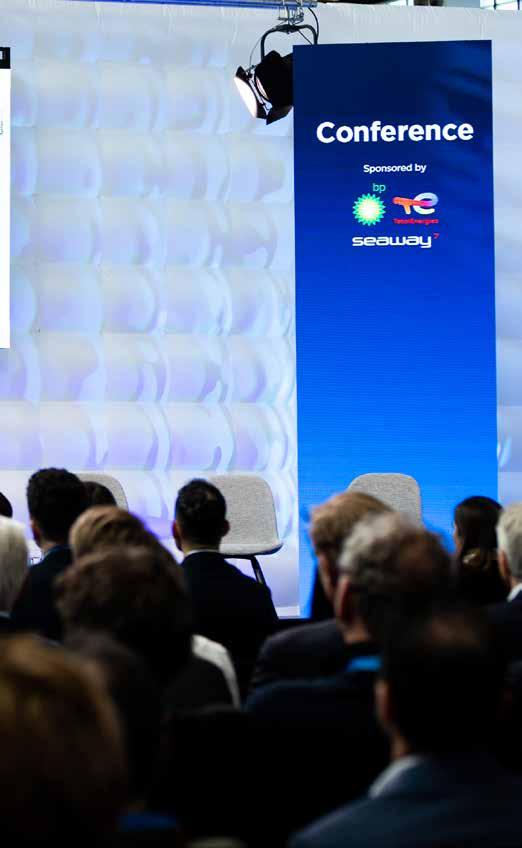
“Floating wind turbines offer more options to solve the puzzle of achieving a fast energy transition in the coming years,” said Axelle Viré, Professor of Floating Wind Energy and Head of Department at TU Delft. Viré will be one of the panelists of the Floating Wind conference session at the upcoming Offshore Energy Exhibition & Conference (OEEC) in Amsterdam.
Furthermore, the number of wave and tidal energy projects is also increasing, albeit at a pace slower than with the
already established wind energy technology. Floating solar is also entering the scene, most notably as an addition to offshore wind farms, so the marine energy industry is now buzzing with activity.
Renewables are also playing an increasingly significant role in the production of hydrogen and clean fuels, creating an unbreakable link between multiple industries, some of which have previously been concentrated within their own domains.
The global quest to achieve the goals set under the Paris Agreement is joined by carbon capture and storage (CCS) as well as decarbonization technologies throughout the supply chains and the wider economy.
Still, some hurdles remain, especially in moving new projects to deployment faster and building them with the existing supply chains.
On the policymaking side, several governments around the world are working on setting up systems to better support new technologies in the energy sector and streamline permitting to accelerate project buildout. New rules are also being introduced in tenders to not only include but also enhance nature through project design.
Initiatives on new policies and regulations to speed up the deployment of offshore wind farms, as well as other renewable energy and clean fuel projects, have been spurred by both national clean energy ambitions and the industry itself as it oftentimes faced slow and cumbersome permitting systems.
In offshore wind, the supply chain is also one of the challenging areas as it is expected to become more strained as both the number of projects and the sizes of wind turbines continue to grow. With floating wind joining the stage, especially with options for inport maintenance, existing vessels and ports serving the industry are anticipated to soon become stretched to their full capacities.
The industry and governments are starting to join forces in this area to

ensure that national renewable energy objectives are reached. With ports, in particular, the collaborative approach crosses country borders and spans several sectors
Working in harmony
“Port logistics is an important part of the equation to reduce the LCOE. We will take our responsibility, and we recognize that this is not possible without cross-border collaboration,” said Tommy Sandtorv, Chief Commercial Officer at Norway’s Karmsund Port Authority, also a panelist of the Floating Wind conference session at the upcoming OEEC 2024 event.
The session will also host Richard den Hollander, Global Business Development and Account Management Director at Seaway7, and James Young, Chief Strategy and Compliance Officer at JDR Cable Systems, who will provide insight into the industry from the perspectives
of an offshore construction specialist and a subsea power cable supplier.
“As we move towards a future powered by renewable energy, every offshore wind farm, offshore substation and cable becomes a critical piece of the larger energy puzzle. These aren't just single projects-they are part of an increasingly interconnected offshore grid,” said Saskia Jaarsma, Head of Offshore Development – Large Projects Offshore at TenneT.
Saskia Jaarsma is joining OEEC 2024 as a panelist in the Grids & Interconnectors session which will also host speakers from the Netherlands Enterprise Agency (RVO), TNO, and RWE.
Floating wind and transmission systems are just two of the many topics that will be in the focus of this year’s Offshore Energy Exhibition & Conference (OEEC).
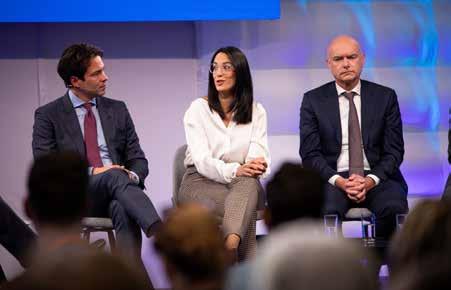
This year’s event theme is Harmony and throughout the exhibition floor, the conference, as well as other parts of the event program, OEEC aims to showcase the increasing collaboration between the industries and their verticals, and spur stronger ties between multiple players across the sector.
New tender designs and requirements will be the focal point of the Innovations for tenders panel and the supply chain will also have its own dedicated session, as will CCS.
“Carbon capture and storage (CCS) is vital to the UK reaching net zero by 2050. The NSTA has a significant role to play in realising the UK’s CCS potential,” said Alistair Macfarlane, Manager UK Carbon Transportation and Storage at the North Sea Transition Authority (NSTA) and one of the panelists at the CCS conference session at this year’s OEEC.
The Stage will offer more knowledge sharing and opportunities to keep up with developments in the offshore energy sector. David Molenaar, former CEO at Siemens Gamesa Renewable Energy BV, and Manon van Beek, CEO at TenneT, will be among the speakers.
Offshore Energy Exhibition & Conference is held in Amsterdam, at the RAI Amsterdam convention center, where all the industries of the offshore energy sector come together once a year to meet. OEEC 2024 will be held on 26 and 27 November.
By Adrijana Buljan

















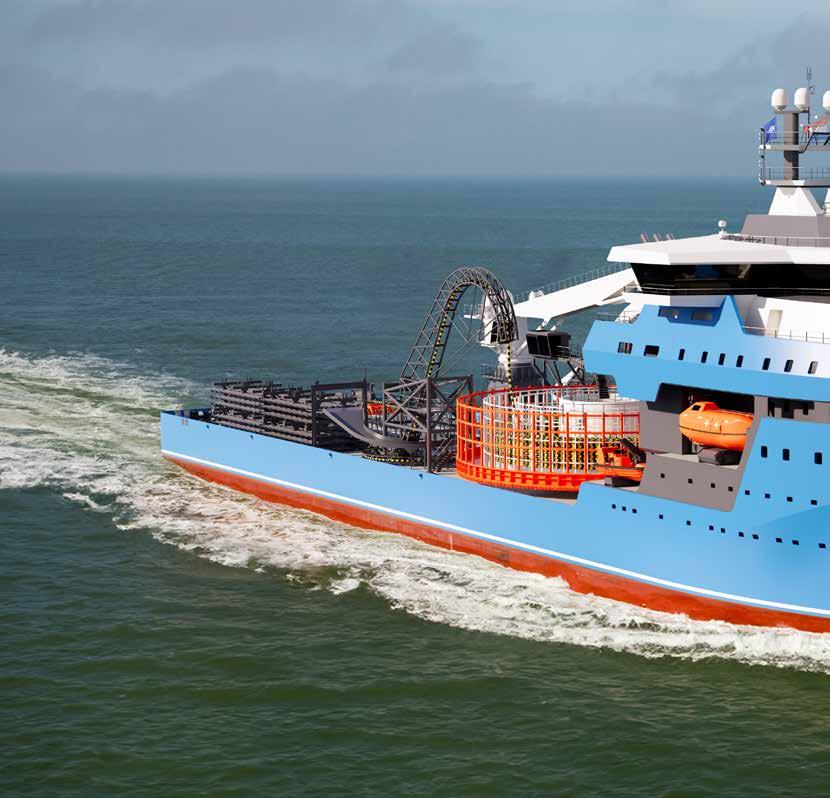
Around ten years ago, the Damen Offshore Carrier (DOC) was launched. The idea was simple – maximum versatility and optimum efficiency. The DOC was employed in cable laying operations, demonstrating a flexible, reliable approach to the task.
Now, Damen has applied the proven credentials of this vessel, combined with the capabilities required by the modern maritime operation to a new, dedicated Cable Laying Vessel (CLV), as Naval Architect specialist Rolf Sluman explains.
"To maintain the relevancy of our designs we continue to develop them based on evolving market needs and
emerging technologies. With the CLV our aim has been to provide the client with a proven, reliable vessel suited to current operational requirements, with shorter lead times and increased cost-efficiency."
A degree of standardisation
One way in which Damen has achieved this is with the application of a theme for which the company has become
renowned – standardisation. At least to a degree.
"With a vessel such as this, it's challenging to create a standard platform in the way we would with, for example, a tug, crew transfer vessel, or other workb This requires a certain amount of customisation for each vessel. What we can do, however, is apply standard principles and compo-
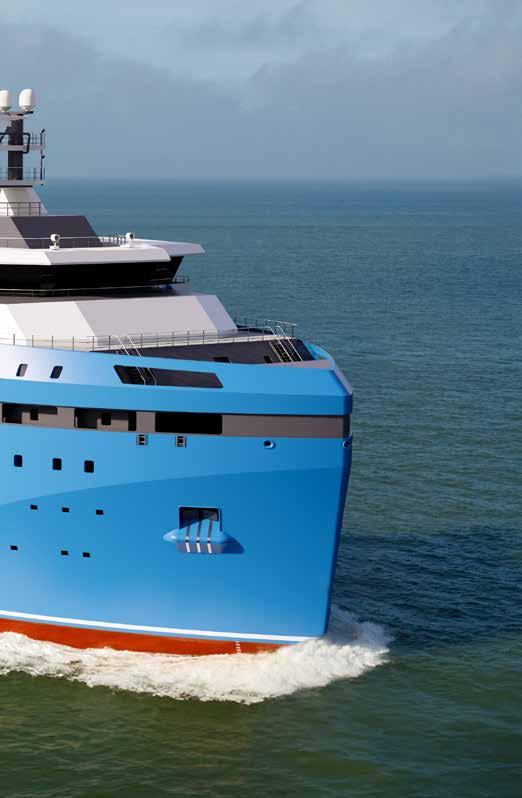
nents in order to able to adapt quickly to client requests."
In order to achieve this, Damen is working on establishing the design parameters – weight, stability, speed-power etc. – that will enable it to perform engineering and produce required documentation. This will also enable the company to give a price indication at a much earlier stage in the process.
Modular approach
With a proven design both below the main deck, encompassing the power generation and propulsion layout,
and above in the superstructure, including HVAC, crew flow, accommodation, and bridge layout, the vessel’s foundation is solid. This leaves the client-specific area arrangement open for modifications.
"It's a modular approach leaving the middle of the vessel free for the installation of whatever mission-specific equipment the client requires," says Rolf.
The vessel displays an impressively flexible scope. The CLV can be constructed to host the equipment necessary for installation, maintenance
and repair of inter-array and export cable spreads.
Increasingly sustainable
In order to meet Damen standards and modern operational needs, the next generation CLV is required to display an increased level of environmental awareness.
"Our clients are increasingly demanding sustainability. Damen has responded to this by setting ourselves the goal to become the most sustainable maritime solutions provider," explains Rolf. “One of the ways we go about this in the design of our vessels. In the majority of cases, the technology has not yet reached a stage of maturity. We are, however, building vessels today that will still be operating in 25 years time, so they have to be ready for the transition."
Damen's approach to this is to prepare the CLV for methanol propulsion when the time arrives. The vessel will feature engines suitable for the use of methanol in the future. Similarly, its tanks will be arranged in a manner suited to methanol storage.
"We're also including cofferdams for hazardous zone partitions and reserving the space for piping and ventilation, etc. to make the future conversion to methanol straightforward," says Rolf.
In a further move towards sustainable efficiency, the new CLV vessels
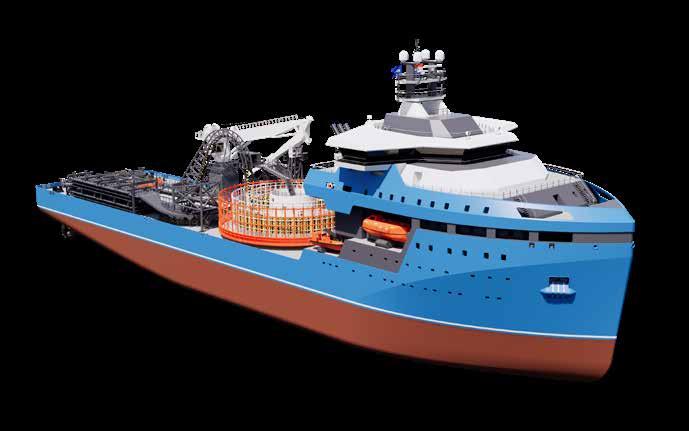
will feature a battery system for peak shaving, DP spinning reserve and electrical sailing for short periods. This means that the installed power of the generator sets can be reduced, thereby lowering emissions.
Increased capacity
The superstructure, funnels and lifeboats on the new vessels have been designed to be much more compact than previously, freeing up additional space on main deck for mission equipment. The vessel will also feature construction optimisation resulting in significantly lower weight, ena-
bling extra payload. The tank layout, including the double bottom height, has been optimised to offer additional stability, which also enables the carrying of extra cargo.
Safe, stable, superior seakeeping
A further improvement to the onboard experience results from the optimised ballast water arrangement, with large roll reduction tanks installed at a high level. This arrangement offers considerably improved seakeeping.
The new concept offers the chance to take safety and reliability to another

level with dynamic positioning, too. The CLV was prepared for DP2 installation. The new CLVs, however, will go a step further, with space reservation for DP3.
Ready for it
Damen envisages a range of three vessels - the CLV 4000-6500 Hybrid, the CLV 6000-10000 Hybrid and the CLV 9000-13000 Hybrid. The vessels will span cable payload between 4,000 and 13,000 tons and will be between 90 and 145 metres in length, to suit a range of operational requirements.
Rolf concludes, “The CLV represents a step forward – in terms of safety, sustainability, comfort and efficiency. It really is a design fit for the future. I’m looking forward to the first client enquiry and getting this vessel off the drawing board and into the water.”
Contact I www.damen.com
The Industry Contribution is a section in which companies share their business endeavors or market analyses. Please contact us at jp@navingo.com for inquiries.


Good employership starts with happy employees, who are motivated, challenged and upto-date. In our present time with technological developments at top speed, innovations and transformations professional agility is paramount. Would you, as an employer like to make a structural contribution to the technical development of your employees? Consider a collective membership at the Royal Netherlands Society of Engineers (KIVI: Koninklijk Instituut Van Ingenieurs). Sign up ten (or more) of your top engineers and they can immediately benefit from all advantages the largest engineering platform in the Netherlands has to offer.







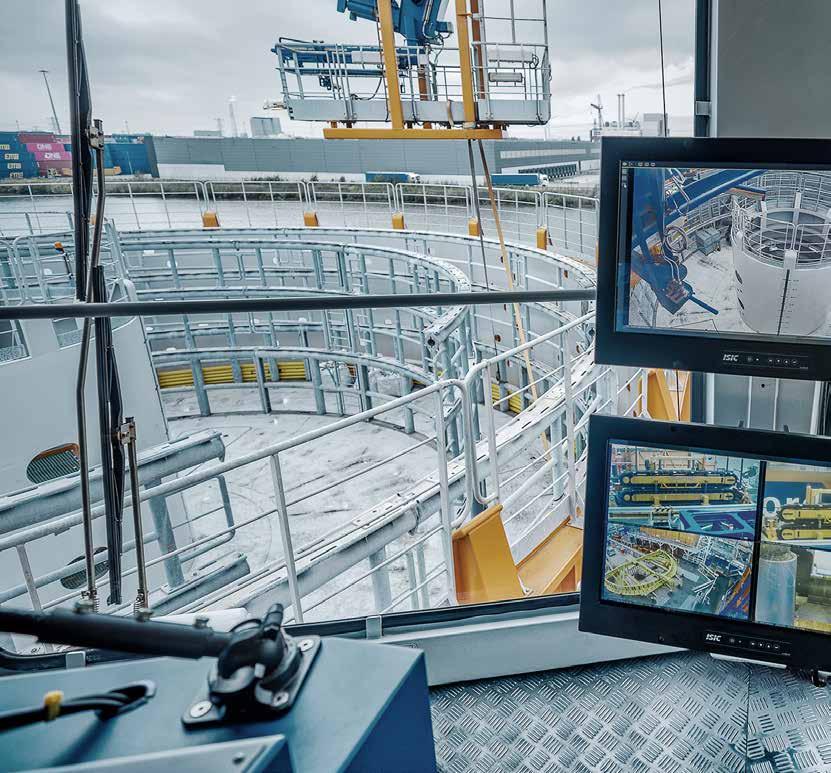
The operations involved in the installation, commissioning and maintenance of offshore wind farms are complex in nature. Therefore, it should come of no surprise to note that the equipment required to carry out these campaigns need to be just as innovative. It is for this reason that off-the-shelf components simply do not deliver what operators are looking for: more often than not, developing bespoke one-off products is the only way to get the job done.
The Netherlands-based engineering and manufacturing company Draftec knows this only too well. “Clients do not come to us for a product that they can find in a catalogue. Quite the opposite, they come to us looking for flexibility in the design,” begins Robin de Vos, Draftec’s Lead Electrical and Software Engineer. “Furthermore, they want to be involved with the design process because they often have limited footprint available on board their vessels.”
While concentrating on the design, engineering and production of custom-made products, Draftec’s portfolio – of which approximately 90% is mobilised in the offshore energy sector – is notably diverse, ranging from single components all the way up to whole systems. “Our work varies a lot in format,” De Vos continues. “It can be a small, relatively straightforward piece of equipment: a rotating crane hook, for example. But we also work on total packages: an entire cable lay
installation is a good example of such a complex project. And even similar projects – a survey moon pool actuator, for example – on a client’s fleet of vessels end up being one-offs as each ship was slightly different.”
Although Draftec’s projects are diverse – pile cleaning tool, containerised cable tensioner, umbilical bend restrictor, motion compensated fall-pipe system, monopile gripper and retractable boat landing ladder to name a few – the
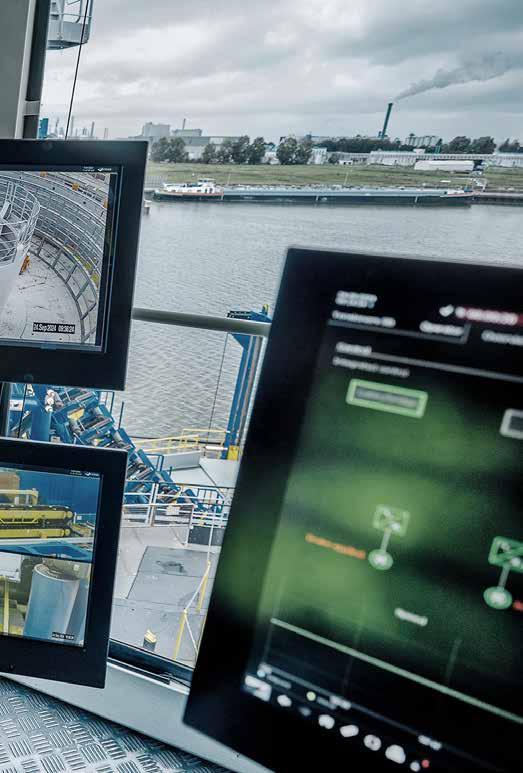
common denominator is that each one starts off with a blank piece of paper.
“We design and engineer our projects from scratch. The first step is often to go on board and look at the situation, listen to the client’s requirements and the problem that they are facing,” De Vos explains. “Then, after making a concept design, we have a collaborative working process with the client to produce a detailed design. This is an interactive back-and-forth relationship in which we share our knowledge and experience to come up with a solution. This is then engineered, manufactured, assembled, tested, commissioned and installed by us.”
Specialist equipment for specialist tasks: that is the defining aspect of offshore engineering. And this is how Draftec has been working since the company was founded in 2009. During this time, the company has worked with a multidisciplinary approach, with its hydraulics, mechanical and electrical departments working in unison.
“Because we are a multidisciplinary company, everyone is aware of each other’s job and we are all involved in the design from the beginning. As a result, even the most straightforward action such as placing a sensor, for in-
stance, goes smoothly because both the electrical and mechanical teams know what is expected of each other,” says De Vos.
The fact that Draftec has all these disciplines in-house is also an advantage, with teams for the most part working in parallel. “In practice, it is good to have the mechanical and hydraulic teams working slightly ahead of the electrical and software aspects of the project. This is because hydraulics plays such a crucial role in the components and systems we build; therefore getting the hydraulics right first prevents us having to make modifications afterwards.”
When talking to De Vos, it is clear to see that he takes definite pride in his work. “The Nexus project [Van Oord’s cable-laying vessel] was very memorable for me – this has stayed in my mind as a unique project. It was actually the first Draftec project I worked on back in 2014. We started off working on one electrical system and ended up getting involved in the whole cable lay system. It is very nice to work so closely with a client and translate their requirements into a finished product.”
Another common factor in Draftec’s projects is short lead times: projects are commonly wrapped up and ready to go within the tight timeframes required by clients. Ten weeks rather than
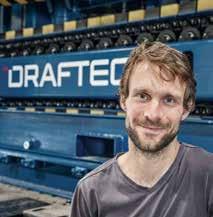
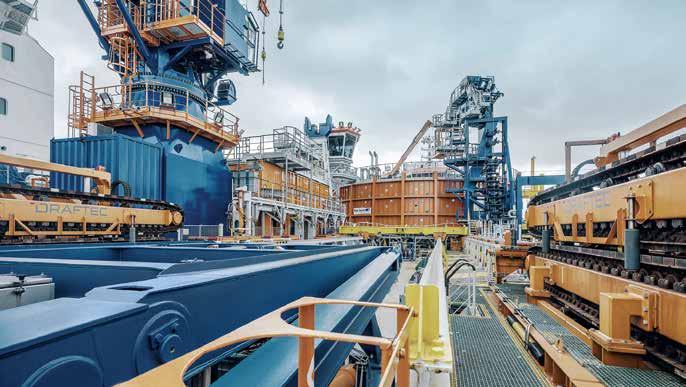
ten months, for example. This is where one of Draftec’s key suppliers – Bachmann electronics – enters the equation. “Bachmann provides the brains of the machines we build, based around their PLCs [programmable logic controllers]. Without a PLC to handle the controls and automation, the machine is not going to do what the client needs it to do,” notes De Vos. “Bachmann PLC’s are not only reliable, they have such short lead times that this is not a limiting factor in our contracts with our clients.”
The first project that Draftec and Bachmann electronics completed together was the automation systems for Van Oord’s cable-laying vessel Nexus in 2014 and since then “every project where we need a PLC, we use a Bachmann PLC” adds De Vos. “They work with us in the commissioning of our products for our clients and provide
us with ongoing diagnostics and service support in the operational phase. If we are facing a challenge and need help, they help us very quickly. It’s a real partnership.”
The question of identifying future trends in the offshore market is notoriously difficult. On the one hand, offshore operators are known to be understandably risk-averse. On the other hand, the offshore wind sector has yielded numerous groundbreaking innovations over the years.
Focusing on his primary task of electrical and software engineering, De Vos points to the importance of stabilising current systems. “Reducing the amount of cabling will certainly optimise and, therefore, stabilise electrical systems. Currently, every sensor has a
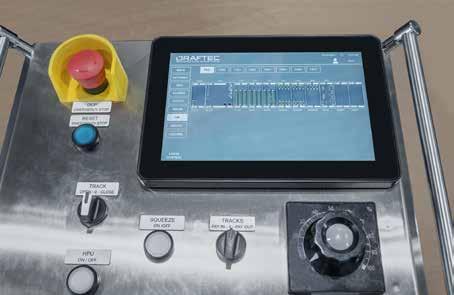
cable running to the PLC in what is essentially a remote I/O system. But we are looking forward to working with Bachmann’s new decentralized I/O, the M100,” he says. “This will allow us to bring all the sensor cables to one point and, from there to the PLC with just one cable. The M100 will result in less footprint on board and enable simplified diagnostics. Also, reducing the length of cables will make repairing faults more straightforward.”
Joining the conversation with a broader view is Draftec’s Director Martijn Boone who highlights the company’s recent merger into the WIND Group of companies as an important development for the future. “WIND is a world leader and a full-service solution provider for transport, handling and storage of subsea cables,” he says. “Joining this WIND family is a strategic decision and truly expands the group potential for future growth. We are really looking forward to be a partner in the global cable business with our added value and experience, delivering the custom-made mission equipment the market need on their offshore wind projects.”
Contact Bachmann electronic GmbH I www.bachmann.info
The Industry Contribution is a section in which companies share their business endeavors or market analyses. Please contact us at jp@navingo.com for inquiries.
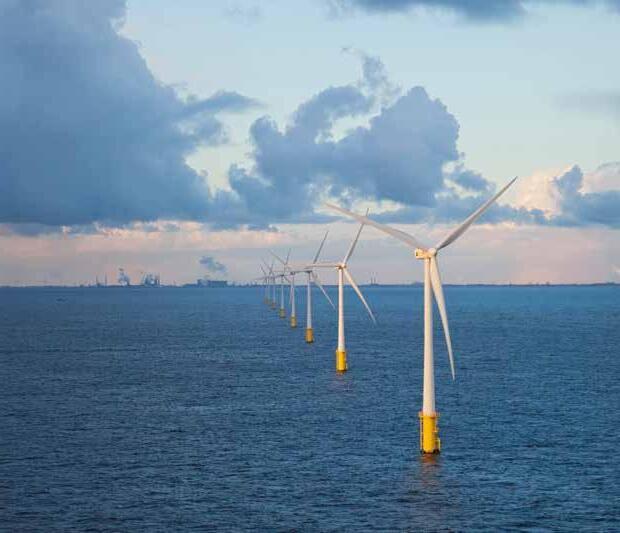

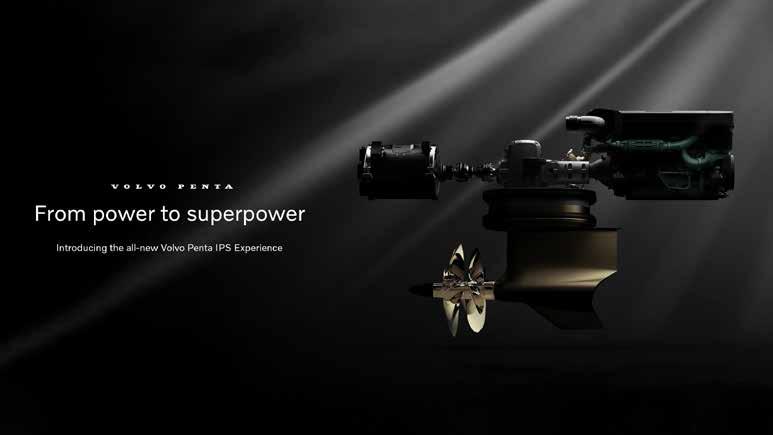
Our fully integrated Volvo Penta Inboard Performance System (IPS) packages are there for you, for excellence in all conditions. Enjoy unrivalled maneuverability, high productivity and low fuel consumption. Maximum power, maximum precision.
volvopenta.com

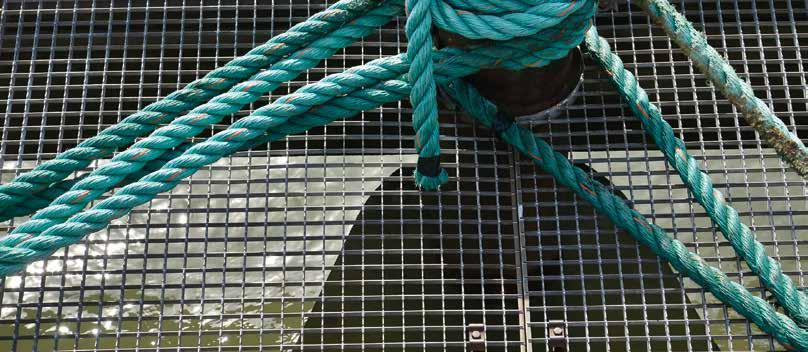
Bezoekadres: Canadaweg 8, 4661 PZ Halsteren Postbus: Box 527, 4600 AM Bergen op Zoom, Nederland t 0164 68 00 97, info@lemans-nederland.eu

Having delivered two test systems for ammonia-fueled engines developed by Swiss engine designer WinGD, Swedish marine technology company Alfa Laval is gearing up to supply its first fuel systems for ammonia-fueled vessels by the end of 2025.
Building on the partnership with WinGD established in late 2023, Alfa Laval has delivered two test fuel supply systems for ammonia-fueled engines, including a fuel valve train and a vent treatment systems.
The Alfa Laval FCM ammonia fuel supply system design will be validated by the end of 2024, with the first marine delivery expected by the end of 2025.
SeaRenergy has been awarded a multi-year contract by Siemens Energy to provide offshore infrastructure services for a minimum of thirteen converter platforms – nine in the German Bight, starting with BorWin5, and four in the UK sector of the North Sea.
The scope of work covers integrated onshore and offshore logistic and support services, which will be executed throughout the commissioning phase of the platforms, including the provision of a Platform Supply Vessel (PSV).
''Awarding SeaRenergy with this long-term contract is not only a testament to our trustful cooperation over the last 12 years but also a strong signal to the market that Siemens Energy is strengthening the local supply chain in Germany,” Hauke Jürgensen, Senior Vice President of Grid Solutions Siemens Energy, said.
The contract, an essential part of Siemens Energy’s offshore supply infrastructure, comprises several service packages designed to ensure smooth and safe operations for the commissioning of these critical platforms. SeaRenergy is responsible for overseeing both onshore and offshore logistics, and coordination to ensure seamless operations.
Norway-based energy services provider Aker Solutions has been hired for topside modification assignment at a project that aims to bolster gas production from a giant oil and natural gas field in the northern part of the North Sea, which Equinor, a Norwegian state-owned energy giant, operates on the Norwegian Continental Shelf (NCS).
Thanks to this new contract, starting right away and worth between NOK 0.5 billion (about $47.58 million) and NOK 1.5 billion (close to $142.8 million), Aker Solutions will handle the engineering, procurement, construction, installation, and commissioning (EPCIC) work for the topside modification of the Troll A platform.
Considered to be Norway’s largest gas field, Troll is said to supply 10% of Europe’s gas needs. The Norwegian firm’s job related to preparing the Troll A platform for receiving and processing gas from eight new wells at Troll West is not the only task it has been entrusted with, since it is also in charge of preparing and installing equipment for the clean-up of the initial well fluids during the start-up of the wells.
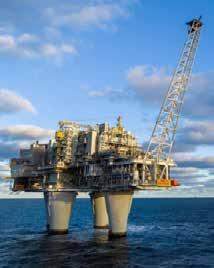


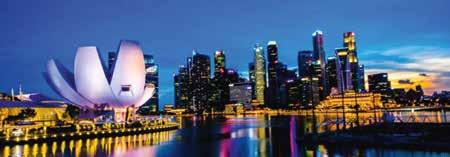

Colombiamar 2025
Cartagena, Colombia 12 - 14 March SEA Asia 2025 OTC Houston 2025 Houston, USA 5 - 8 May
Marina Bay Sands, Singapore 25 - 27 March



Nor-Shipping 2025 Oslo, Norway 2 - 6 June SEAWORK Southampton 2025
Southampton, UK 10 - 12 June
Visit our websites for all our events. maritimetechnology.nl iro.nl

Busan, South Korea 21 - 24 October

A seventh-generation drillship, which recently became part of the floater fleet belonging to the U.S. offshore drilling contractor Noble Corporation, is making progress in its drilling campaign off the coast of West Africa, which is related to work offshore Guin-
A one-well drilling deal was secured in November 2023 for the Ocean BlackRhino drillship, covering work offshore Guinea-Bissau. With a minimum duration of 30 days, representing $15.4 million of additional backlog, excluding mobilization, the work under the contract was slated to begin in July 2024.
At the time, the rig was on a drilling campaign in Senegal with Woodside

The drillship reached the Atum-1x prospect off the coast of Guinea-Bissau in late August 2024, according to AGR, part of ABL Group, which is pro-
viding well management consultancy for this exploration well in the Sinapa license, on behalf of Apus Energia Guinea-Bissau.
Italian shipbuilder Fincantieri has launched Star Princess-the second dual-fuel liquefied natural gas (LNG)-powered vessel being built for the U.S.-based cruise line Princess Cruises. As disclosed, Star Princess is the second ship in the Sphere class, following the delivery of the first of the two ordered LNG vessels , the 178,000 gross ton Sun Princess-the ‘largest ship ever built in Italy.
Much like its sister vessel, Star Princess, which is expected to be delivered in 2025, is being constructed at Fincantieri’s Monfalcone shipyard.
According to Fincantieri, with a gross tonnage of approximately 178,000 tons, this ship has, too, found its place in the annals of Italy’s ‘biggest ships ever engineered‘.
Swedish cleantech startup NoviOcean, formerly known as Novige, is gearing up to launch an equity crowdfund-

ing campaign through R Europe, formerly Seedrs. This initiative will offer investors a chance to acquire equity in the company as it drives forward the commercialization of sustainable wave power technology.
NoviOcean aims to co-locate the wave power plants alongside offshore wind farms to increase overall energy output while sharing infrastructure costs, ultimately making the solution more economically viable.
The full-sized NoviOcean wave power plant is 38 meters long and includes six vertical wind turbines that generate 300 kW of power, alongside solar panels contributing an additional 50 to 80 kW, said NoviOcean. The plant has a total output of around 1 MW, with an estimated capacity factor of 40%.
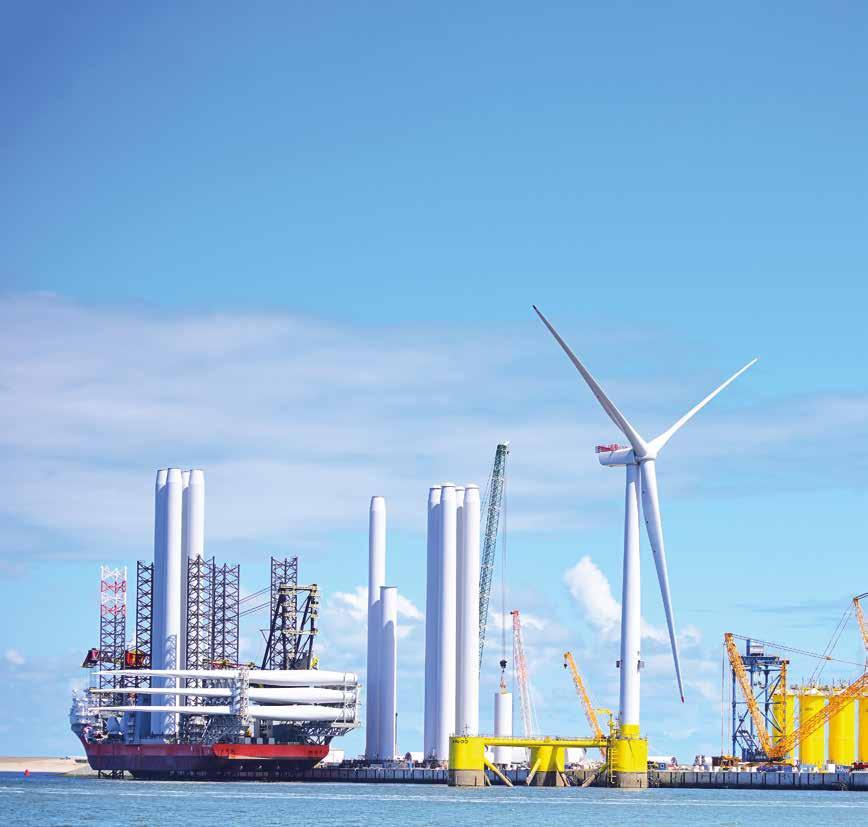

TotalEnergies has signed an agreement with RWE to acquire a 50 per cent stake in two offshore wind projects in the German North Sea. The two projects, N-9.1 and N-9.2, located 110 kilometres off the German coast, were awarded to RWE in August 2024. The concession will run for a term of 25 years, extendable to 35 years. According to RWE, the sites are large enough to accommodate offshore wind farms with a total capacity of 2 GW each.
TotalEnergies’ acquisition of the two sites off the German coast will add to its already awarded N-12.1, N-11.2, and O-2.2 concessions, which should enable the firm to benefit from the synergies of its 6.5 GW German offshore wind hub and optimise its construction and operation costs, according to TotalEnergies.
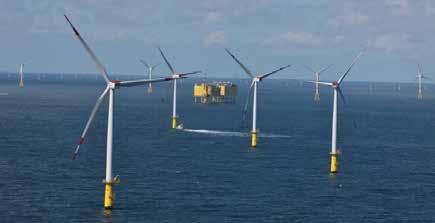
Preliminary studies on the marine environment, subsoil, and wind and oceanographic conditions have already been conducted on the sites N-9.1 and N-9.2 by the German Federal Maritime and Hydrographic Agency (BSH). Investment decisions are expected to be taken by 2027 (N-9.1) and 2028 (N-9.2). Subject to necessary permits and confirmation of grid connection, offshore construction could start in 2029
and 2030, with full commissioning planned for 2031 and 2032, respectively.
RWE and TotalEnergies are already partners in the 795 MW OranjeWind offshore wind farm in the Netherlands. In July, the two companies entered into an agreement under which TotalEnergies will acquire a 50 per cent stake in the project.
The Norwegian government has proposed NOK 35 billion (approximately EUR 3 billion) for a support scheme dedicated towards the first commercial floating offshore wind tender within the Vestavind F and Vestavind B areas.
According to the press release, the government is making progress in following up on its ambitious plan to allocate project areas for 30 GW of offshore wind by 2040. Norway plans to conduct the next tendering round for offshore wind in 2025. After that,

the government intends to hold regularly scheduled tendering rounds and state aid competitions leading up to 2040.
‘’Norway has an enormous potential for floating offshore wind on its continental shelf, but because the technology remains immature and costly, state support is required to accelerate its development. That is why we are proposing an ambitious support scheme. The support scheme will enable the delivery of more power to Norway and pave the way for a new industrial adventure”, said Norway’s Minister of Petroleum and Energy, Terje Aasland.
In March, the government announced that the award of 1.5 GW of floating wind capacity in Norway, which was planned for this year, will be held in 2025.
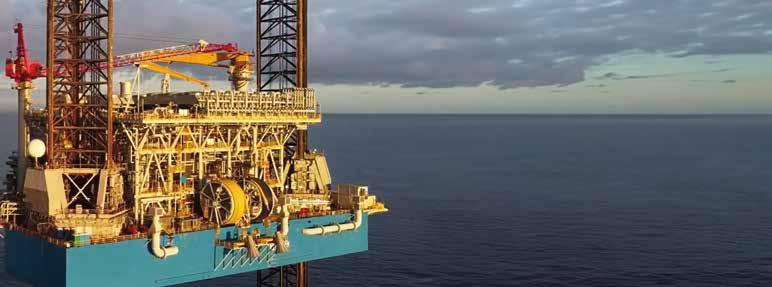

bruggpipes.com


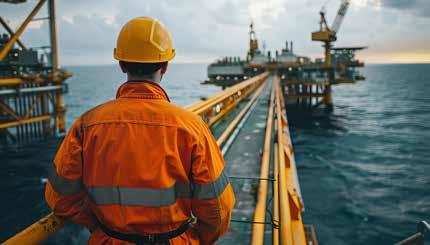
As a specialist in tailor-made pipelines, BRUGG Pipes offers tailor-made solutions for the safe transport of cryogenic media in the offshore area. The vacuum-insulated corrugated stainless steel pipes convey cryogenic liquid gases optimally, even at high ambient pressure and strong waves.
RWE has unveiled the first 108metre turbine blade made at the Siemens Gamesa factory in Hull, which will be part of 100 wind turbines to be installed at the 1.4 GW Sofia offshore wind farm in the UK.
Each of the 100 wind turbines, rated at 14 MW, will be equipped with 108-metre-long blades that will operate at the heart of the Sofia offshore wind project.
According to RWE, more than 50 per cent of the investment in the Sofia project is spent within the UK. Siemens Energy will manufacture, install, and commission all 100 of the latest SG 14-222 DD turbines, each measuring 252 metres tall with a rotor diameter of 222 metres.
In BRUGG Pipes' most recent offshore project, two double-walled stainless steel corrugated pipes were used for a mobile LNG production platform in the Gulf of Mexico. Two flexible pipe-lines, each 220 meters long and weighing a total of 42 tons including the drum, were developed according to customer
specifications and certified according to the EN 1474-2 guideline for the safe transfer of liquefied natural gas.
The pipes are now reliably used as a transport line from the LNG production platform to FSU (Floating Storage Unit) ships. Using the stainless steel corrugated pipes, the liquid gas produced is transported from three offshore drilling units to the ship and from there to the rest of the world.
Pre-assembled at the factory, the vacuum-insulated pipe systems can be manufactured in the desired length, suitable material and necessary coatings.
Manufactured in Germany, they meet all regulatory requirements and, thanks to pressure sensors in the vacuum chamber, enable early detection of pressure drops.

Havfram has been awarded a contract by Vattenfall and BASF for their Nordlicht offshore wind farm cluster in the German North Sea.
The Nordlicht wind farm zone, located 85 kilometres north of the island of Borkum, consists of two separate sites: Nordlicht I, with an expected capacity of 980 MW, and Nordlicht II, with an expected capacity of 630 MW.
For Nordlicht I, the contract covers the transportation and installation support of 68 Vestas V236-15.0 MW wind turbines, with work scheduled to commence in the summer of 2027.
For Nordlicht II, Havfram will execute the transport and installation support of 44 Vestas V236-15.0 MW wind turbines, starting in the summer of 2028.








Dutch marine contractor Van Oord has assembled a floating storage and regasification unit (FSRU) jetty at Wilhelmshaven, Germany for Deutsche Energy Terminal (DET), the German state-owned operator of four terminals.
The construction completion milestone for the FSRU jetty at Wilhelmshaven, managed by FSRU Wilhelmshaven, a joint venture between ENGIE and TES, comes eight months after Van Oord confirmed the contract to build the vessel running on LNG, as this is seen as a more sustainable alternative to marine gas oil (MGO), reducing sulfur, particulate, and nitrogen dioxide emissions.

The Dutch player, responsible for the procurement and construction of the FSRU jetty, installed ten monopiles, including scour protection to prevent erosion. Afterward, the foundations were equipped with platforms, cat-
walks, and furniture. The Vox Apolonia trailing suction hopper dredger was then deployed to dredge the berth pocket and turn the basin to the required depth.
Industry coalition SEA-LNG has unveiled that over 2,000 of the world’s 60,000 largest vessels will be powered by liquefied natural gas (LNG) in the near future, as LNG-fueled vessels keep increasing their share of the global fleet.
According to SEA-LNG, active LNG-fueled vessels now represent over 2% of the global shipping fleet. When factoring in vessels on order, this figure rises to 4% by number and 6% by deadweight tonnage (DWT). Nearly
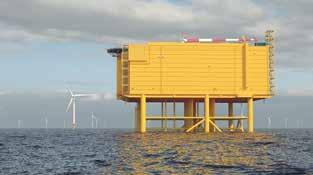
The Dutch-German transmission system operator (TSO) TenneT has started an initiative to partner with offshore wind farm operators and oil and gas sector operators in the Dutch North Sea for sharing operation and maintenance (O&M) services. With an estimated value (excluding VAT) of EUR 1 million, the initiative aims to reduce costs, secure
every day, fleet owners announce new investments in LNG-powered ships.
The number of LNG-fueled vessels has surged from just 21 in operation in 2010—mostly smaller, regionally operating ships-to 590 globally today, including some of the world’s largest containerships, which are now twice the size of those operating a decade ago. With an additional 564 vessels on order, the total is expected to reach 1,154 by the end of 2028.
scarce resources, reduce the environmental footprint of offshore maintenance activities, increase safety standards, reduce risks, and enhance collaboration. Parties that are interested and willing to participate in this initiative should submit a request to join this partnership. Afterward, TenneT will send a Memorandum of Understanding (MoU) to the interested parties with a request for signing.
The competition call began on 7 October, and interested parties have until 31 December 2024 to submit their expressions of interest. In April 2024, TenneT announced that it is exploring interest in an initiative to jointly house management and maintenance services of the offshore infrastructure in a new model. The initiative aims to address long waiting times for maintenance due to resources becoming increasingly scarce, leading to vessels not always being used efficiently.
TenneT expects to have realized 17 offshore grid connections with an installed capacity of more than 21 GW of offshore wind in the Dutch North Sea by 2031, all of which will require regular maintenance.

Sales
Ruud Aantjes | ra@navingo.com
Mariska Jongbloed | mjl@navingo.com
Cas Teensma | ct@navingo.com
Lev Bondarevski | lb@navingo.com
Editorial
Adrijana Buljan | abu@navingo.com
Aida Čučuk | acu@navingo.com
Nadja Skopljak | nsk@navingo.com
Naida Hakirevic Prevljak | nh@navingo.com
Melisa Cavcic | mca@navingo.com
Sara Kosmajac | sko@navingo.com
Zerina Maksumic | mak@navingo.com
Jaap Proost | jp@navingo.com
Coco Kossmann | ck@navingo.com
Marketing
Marleen Varekamp | mv@navingo.com
Printing Vanderperk Groep www.vanderperk.nl

Cover Photo Van der Kloet Foto & Videoproducties
© 2024 Navingo BV. The entire contents of this publication are protected by copyright. No part of this publication may be reproduced, stored or transmitted in any form or by any means without the permission of the copyright owner. While every care has been taken in the preparation of this publication, neither the publisher nor the editor are responsible for the views and opinions expressed in this publication or for any inaccuracies in the articles. About: Offshore Energy Magzine is a publication by Navingo BV, a maritime multi media company based in the Netherlands.
Jan van Galenstraat 56 3115 JG Schiedam
The Netherlands
Tel: +31 (0)10 2092 600
Email: info@navingo.com www.navingo.com
Email: sales@offshore-energy.biz www.offshore-energy.biz
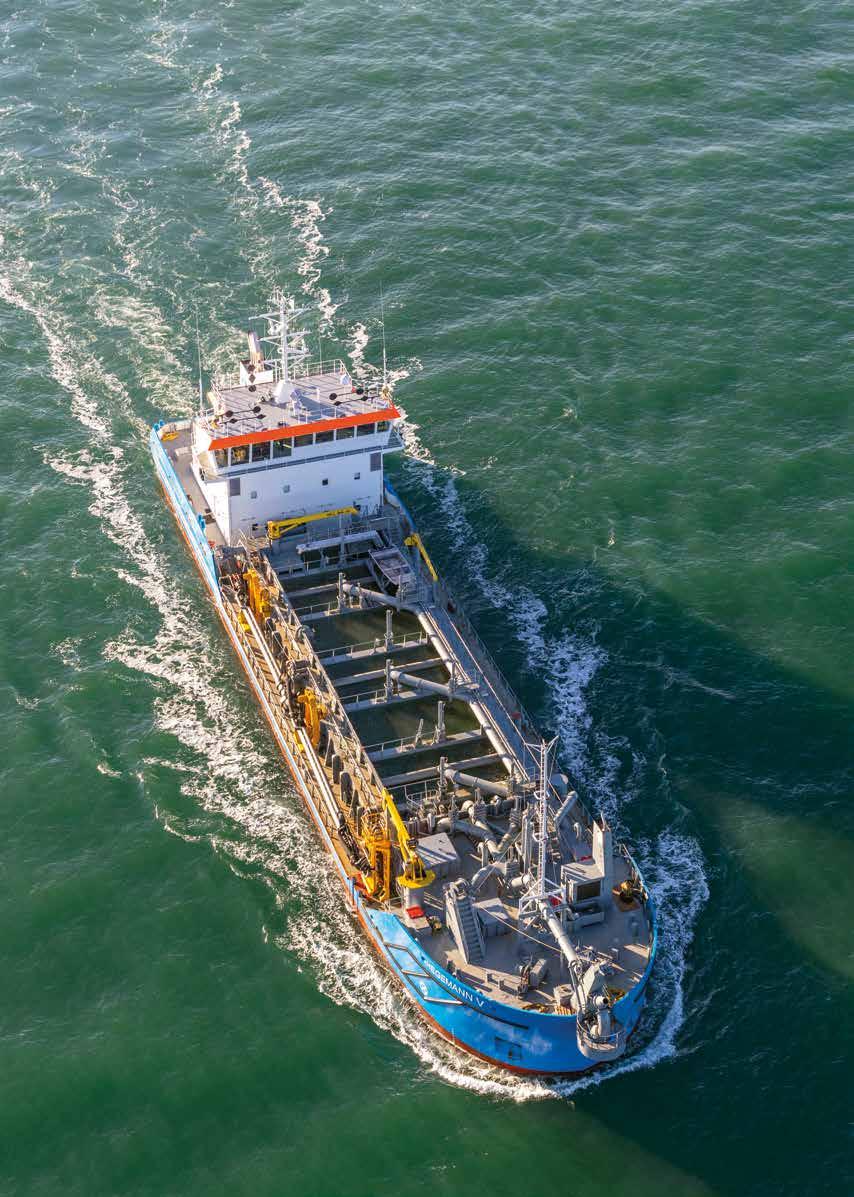

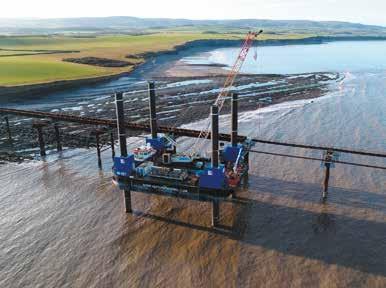


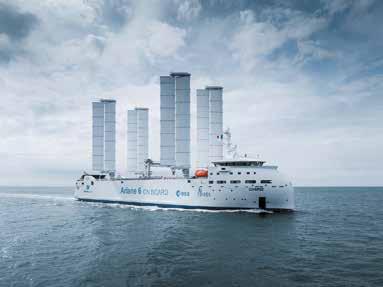

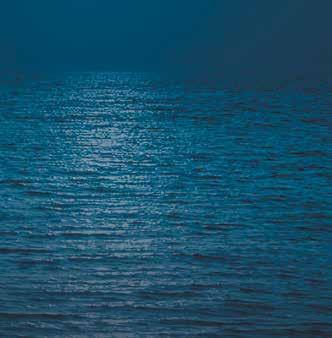
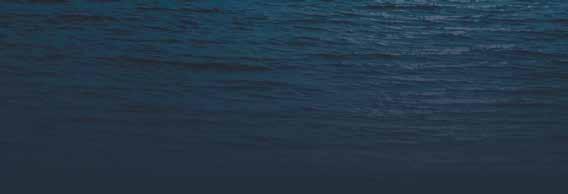


Neptune has been offering versatile maritime solutions, for over 50 years. We strive to offer reliable, flexible and high-quality maritime solutions that will allow our customers to perform their operations as good and efficient as possible.
We design, build, repair, convert and mobilise vessels for the maritime industry including offshore, renewables, marine infrastructure and sustainable industry.

